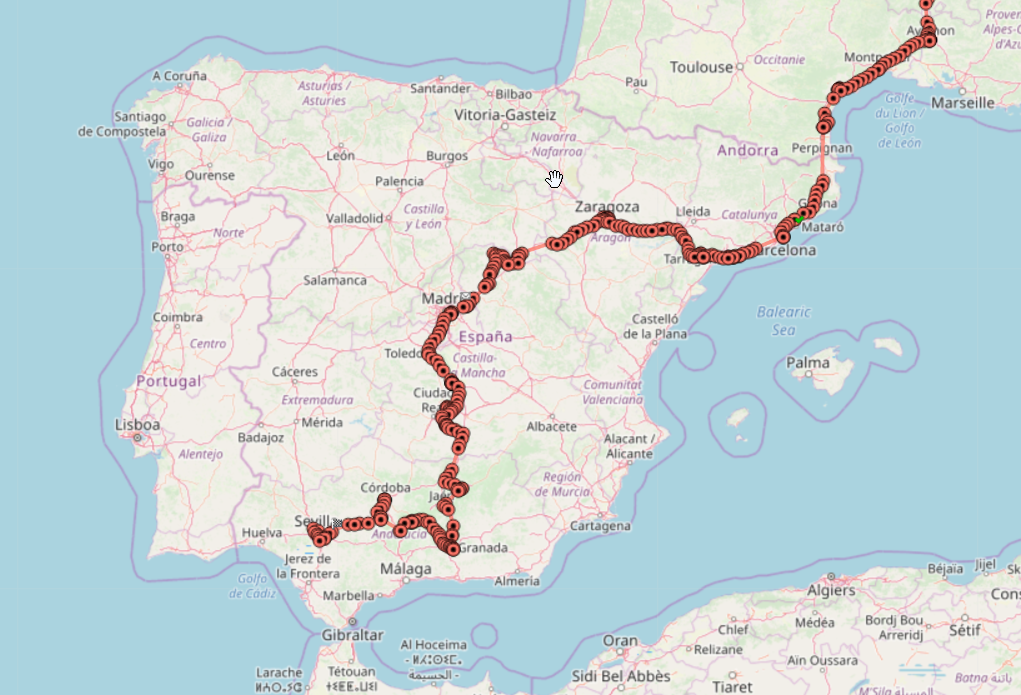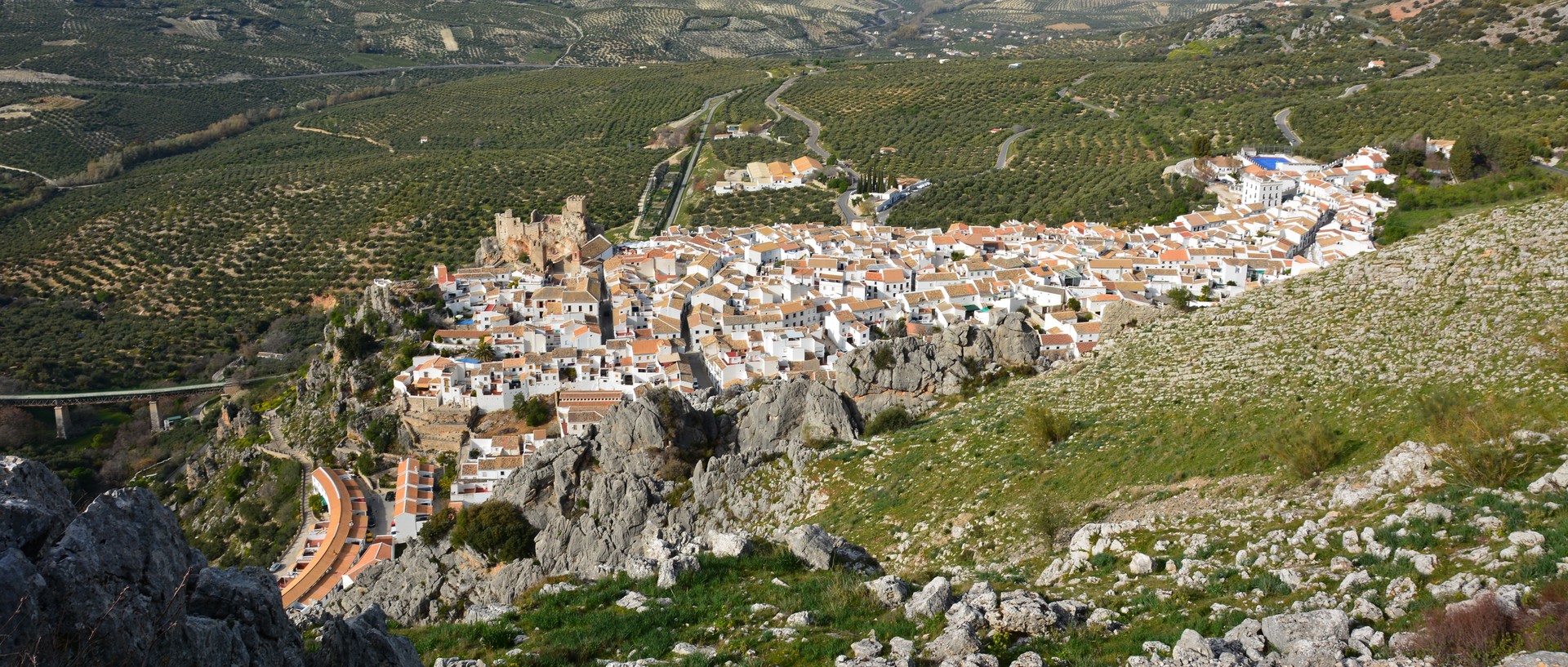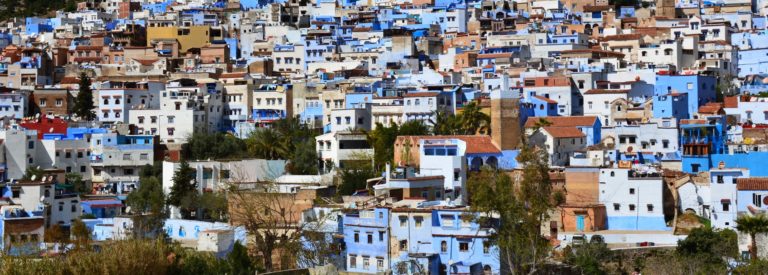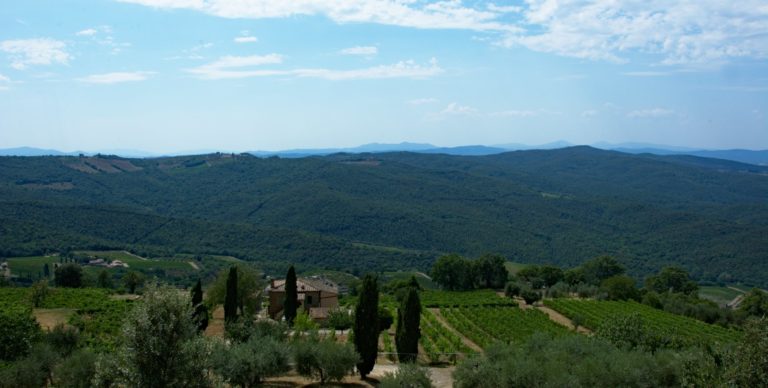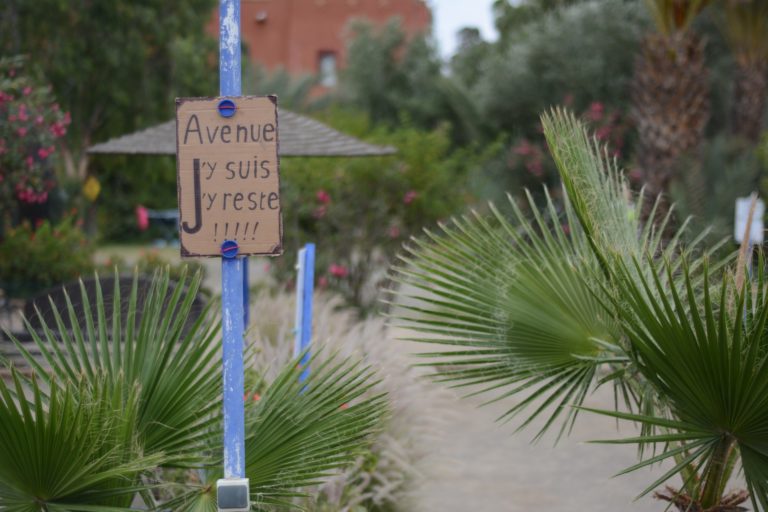We spent the whole second week exploring central Spain. From Saragossa, we made our way via Madrid, Toledo, Granada, Cordoba all the way to Sevilla. A week full of contrasts, sunshine and general good vibes, only interrupted by the occasional tiny city center roads in medieval towns.
After heading inwards from Tarragona we found ourselves in Saragossa. A week in we decided to use the camping sites infrastructure and did our first laundry. Not off to a good start the laundry was still wet coming out of the dryer. As a result, we did our own Christmas like decoration on the trees the next morning, only instead of nice ornaments, it was wet laundry. Only half an hour in and everything was dry – the sun is still better than any dryer!
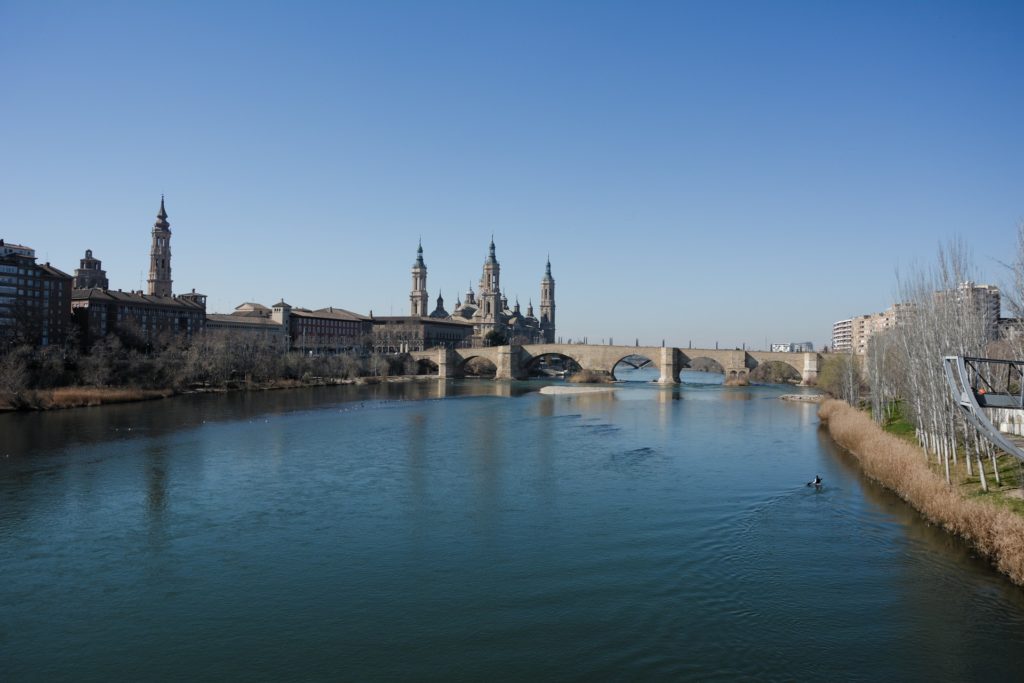
SOMEHOW WE ALWAYS END UP ON A HILL
The rest of the day we walked around the lovely town of Saragossa, the capital of Aragorn. As a result, we didn’t drive too far today but made it to the town of Medinaceli. The town is separated between a new part near the highway and the old part up the hill. We parked our Pantherli on a parking near the old town, sharing the spot with some other vans. The small village is super cute and it gives off an authentic vibe. Being offseason it was really quiet, in summer however it must be bustling with tourists. The downside of the offseason was also immediately clear, not only was it windy but also chilly. Not a surprise at an altitude of 1210 meters above the sea.
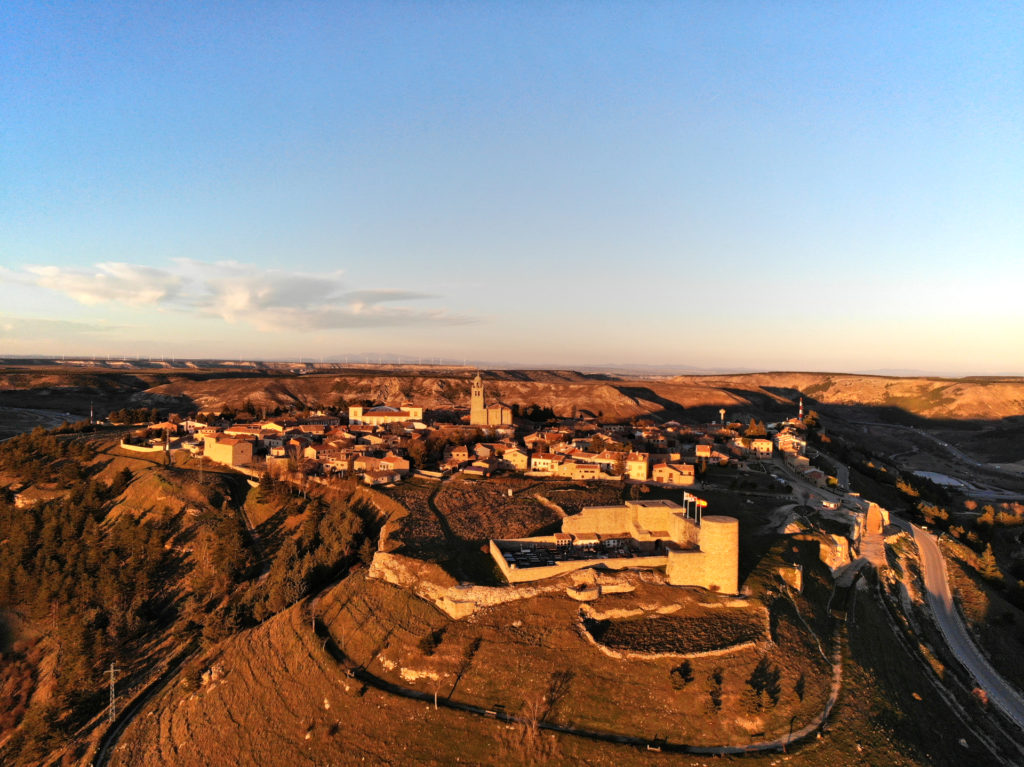
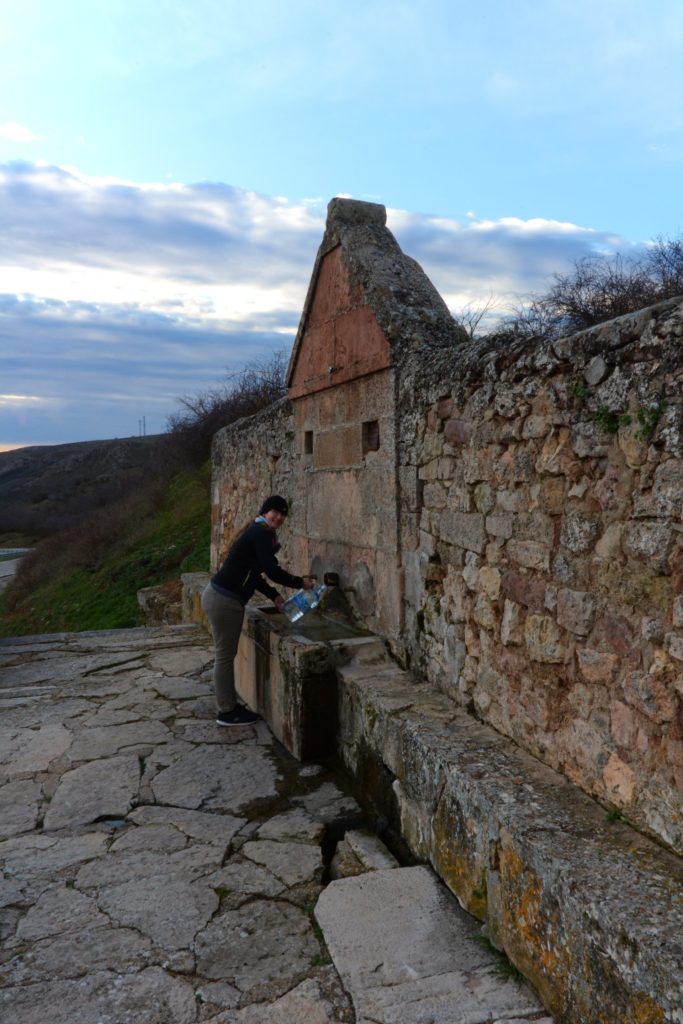
We skipped breakfast in the camper the next morning in favour of something warmer and ended up having a late coffee and heated croissants in a crowded local bar in Siguenza. On the bar-tv, a news show was reporting about the Coronavirus and people seemed to be discussing it heatedly. Our Spanish knowhow, or rather lack of it, unfortunately, didn’t allow us to partake in the discussion. We made a quick stop at the local cathedral, which still has bullet holes from the civil war, looked at yet another impressive Castillo and drove on to Atienza. On the way there, in Imon, is an abandoned salina which made a lovely morbid stop. From Atienza, we took rural roads heading to Madrid, where we parked our camping truck on the outskirts and took the subway to the city centre. Madrid stood in stark contrast with the quiet towns of Castillia-LaMancha visited earlier. The streets were bustling with people leaving the office and heading for some shopping or after-work beers. On the plaza mayor, ManCity fans were chanting in excitement for the match against Real Madrid the next day (which they probably continued doing after having won 2:1). Already being on our feet for a while we opted to just walk along the major sights and not visit any of the museums or exhibitions. Madrid will still be a possible city trip for a later time. Before heading to bed we got dinner at Mercado San Miguel, a former market turned into a high-quality food court. Prices were a little steep compared to the rural restaurants but the food was super delicious.
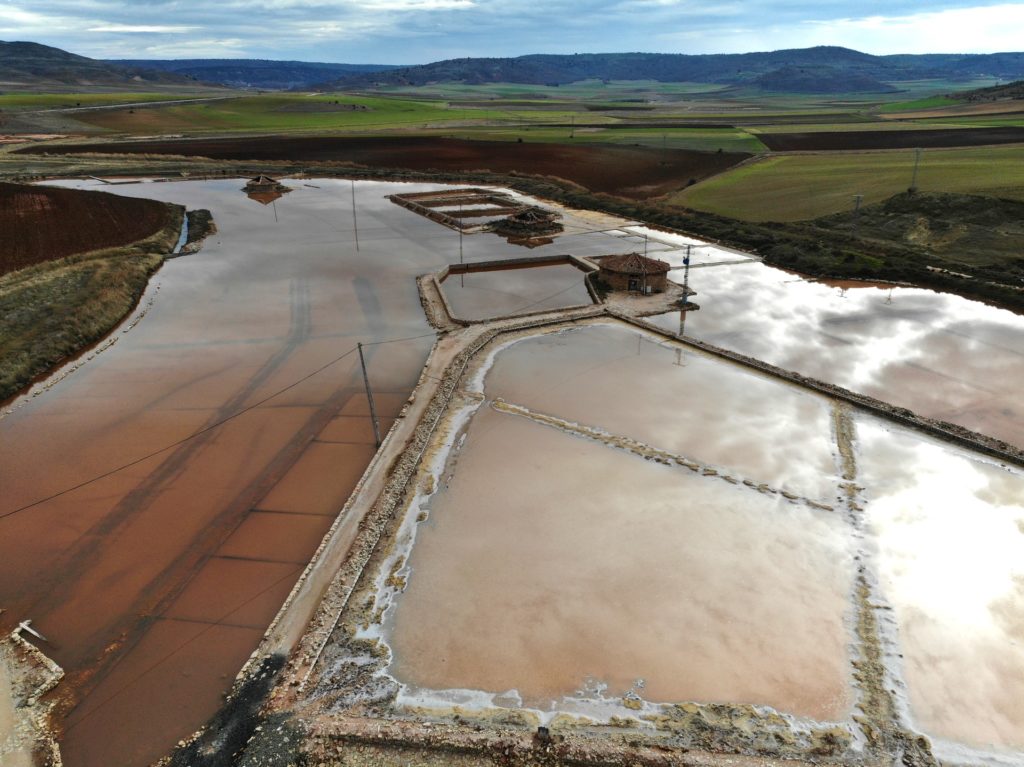
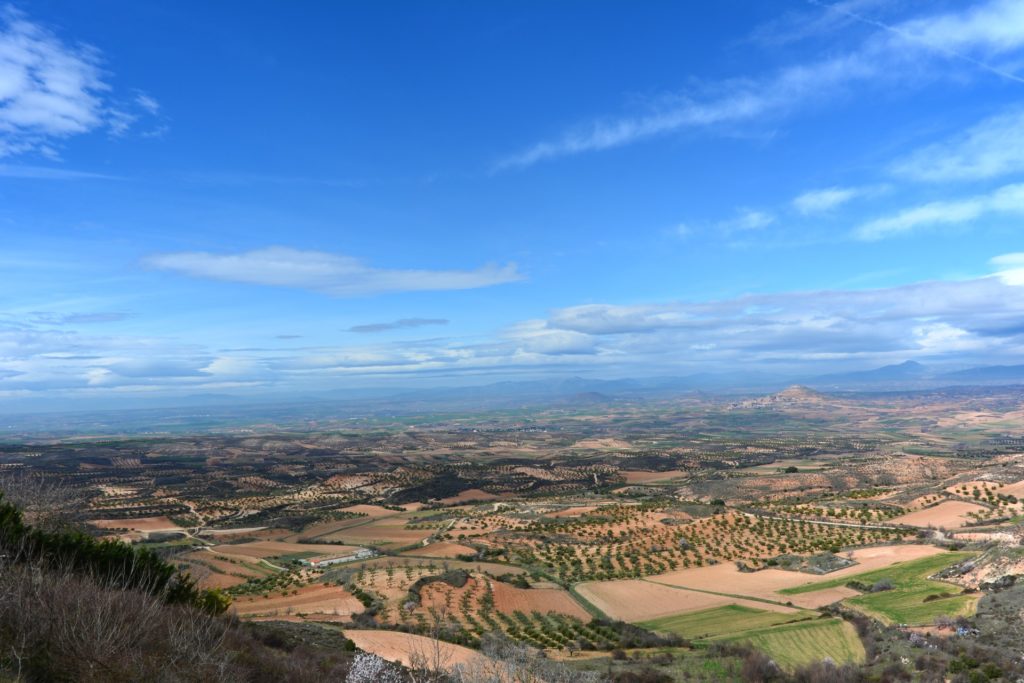
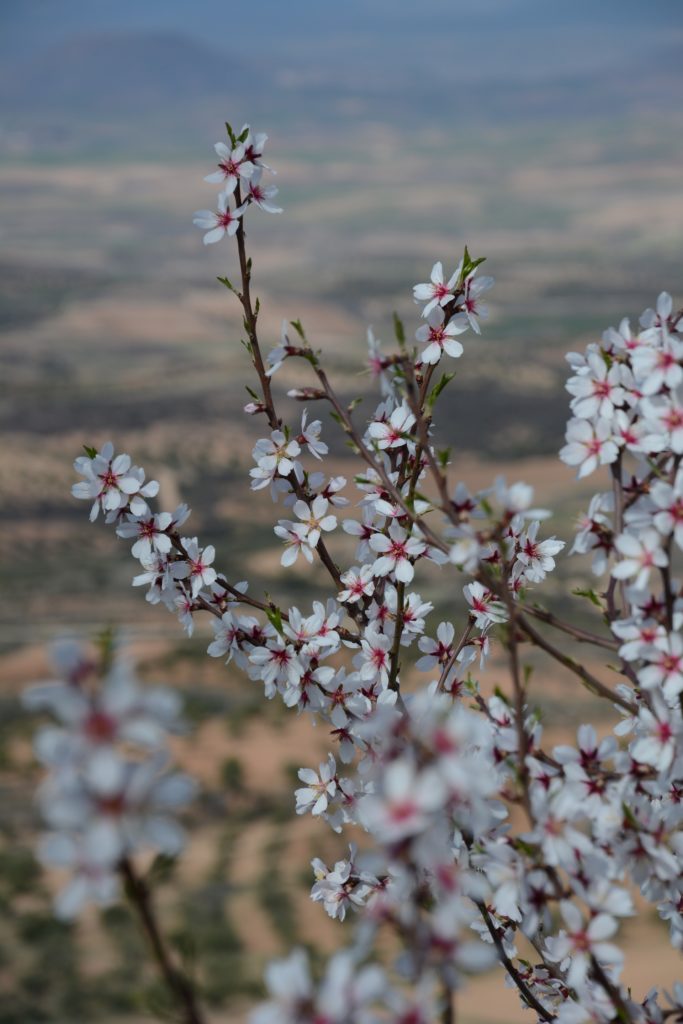
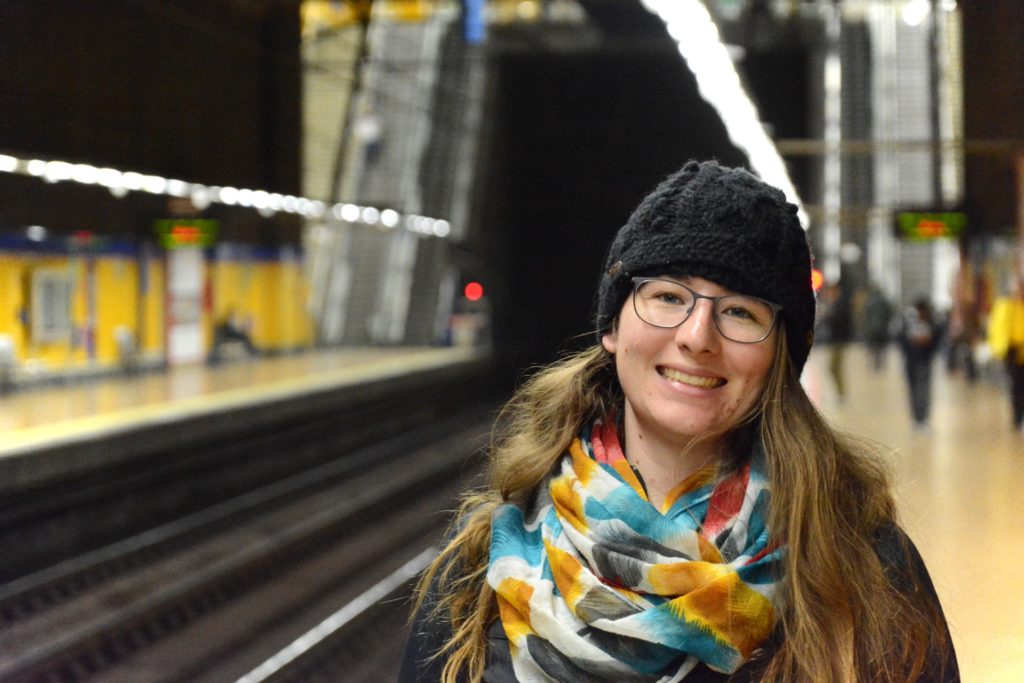
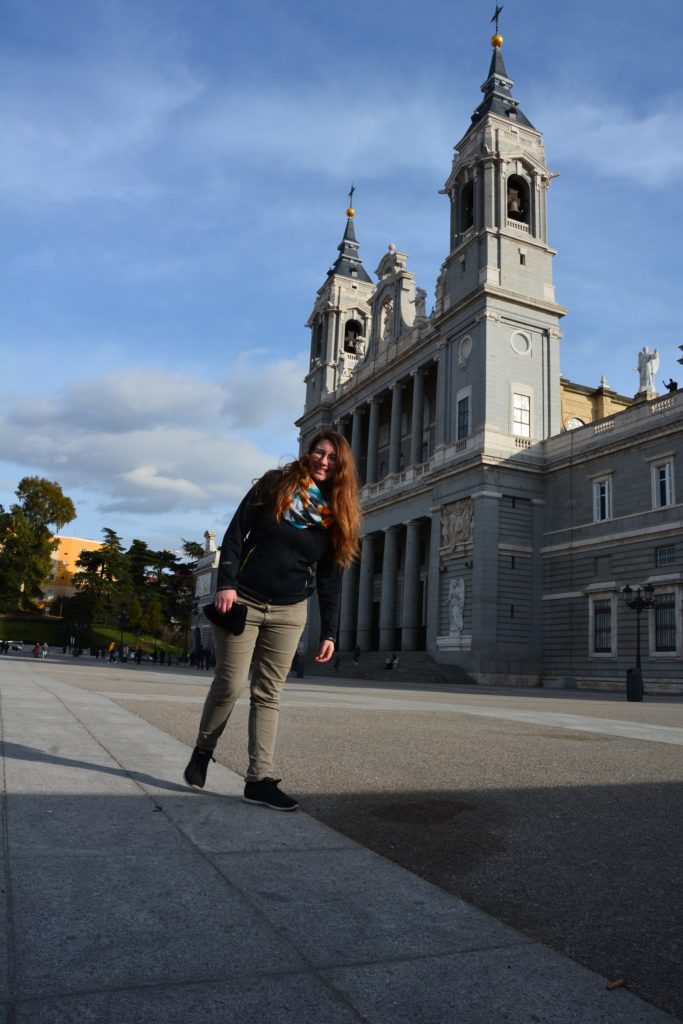
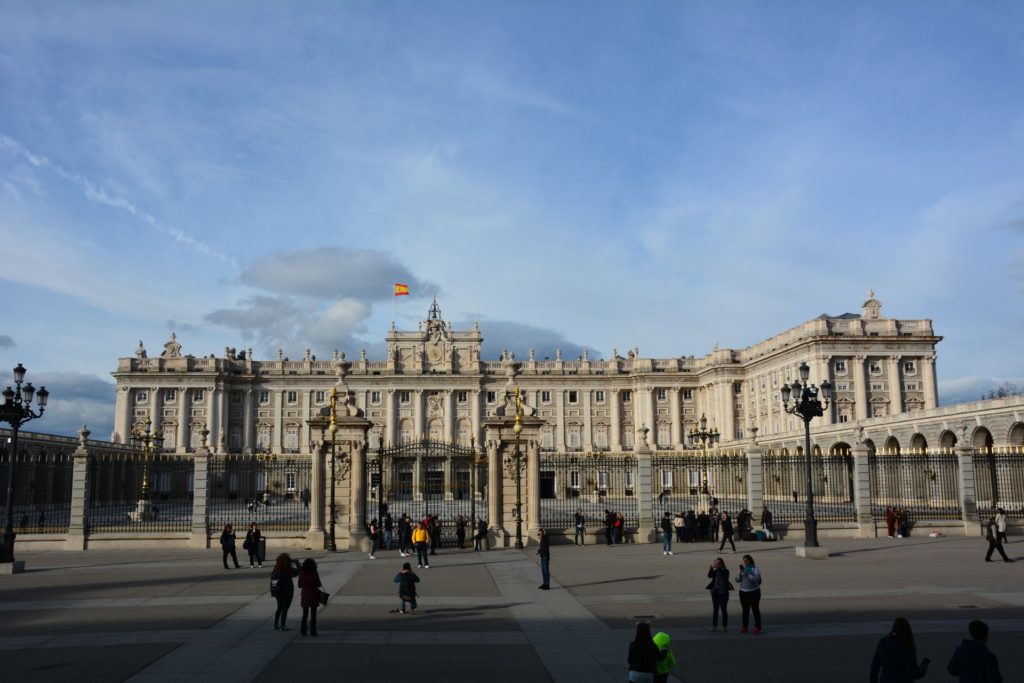
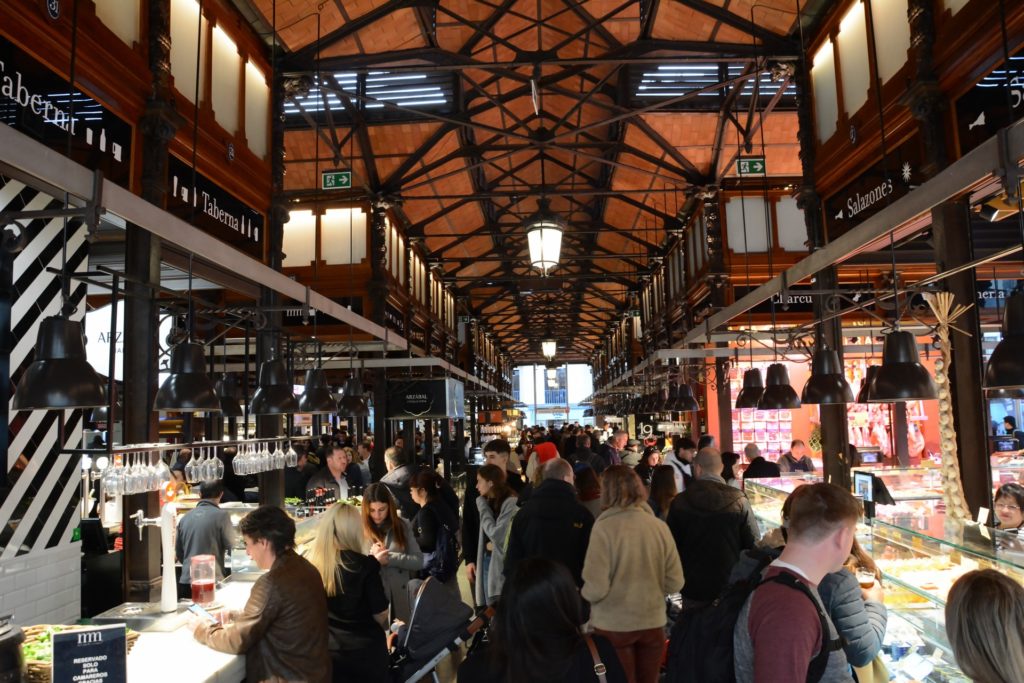
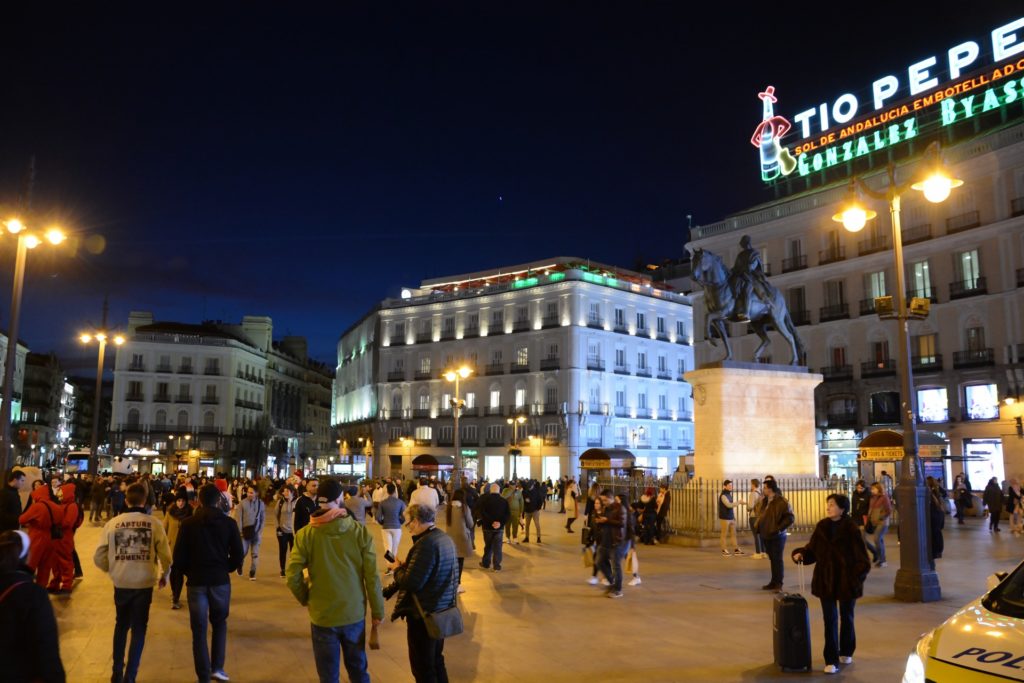
CROSSING THE LANDS OF DON QUIJOTE
We got out of Madrid early in the morning trying to avoid the traffic and not wanting to have breakfast in a city parking lot. The first stop on our itinerary south was Toledo. As often with cities that have huge castles or defensive structures, most of the touristic sights are uphill. We parked the camper outside of the old town and took the mechanical stairs up the hill – blessed be they! Walking around the city was exhausting nonetheless, as it seems there is not a single level road in Toledo. Strengthened by our now usual breakfast in Spain – Cortado, Café con Leche and two Croissants – and an energy boost from the local marzipan we went to the Mirador del Valle which gave us an amazing view on the city and its unique surroundings.
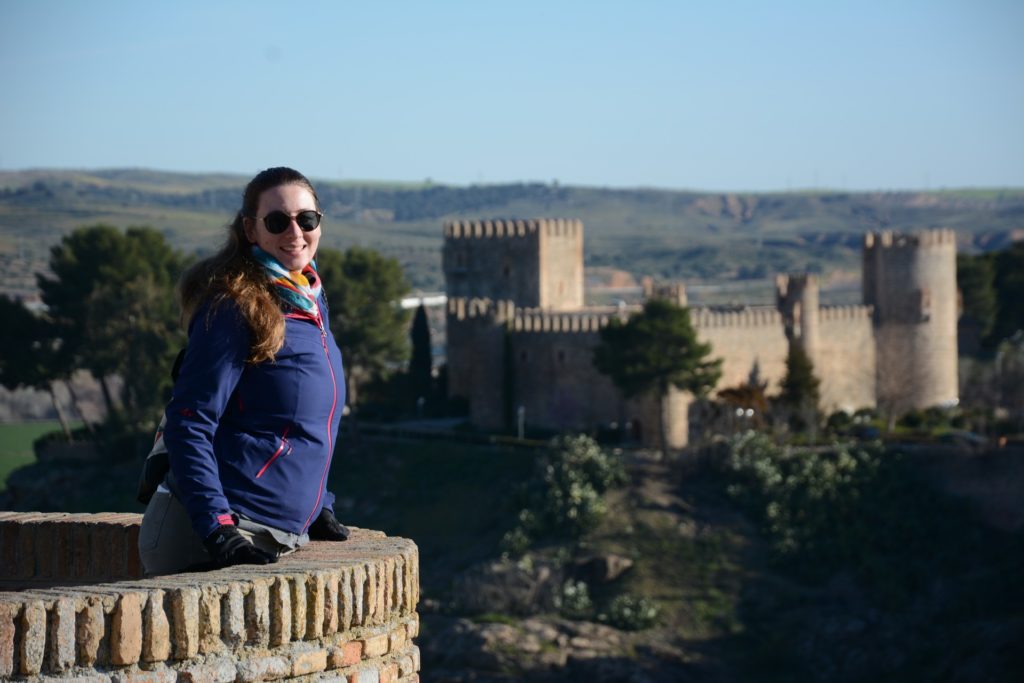
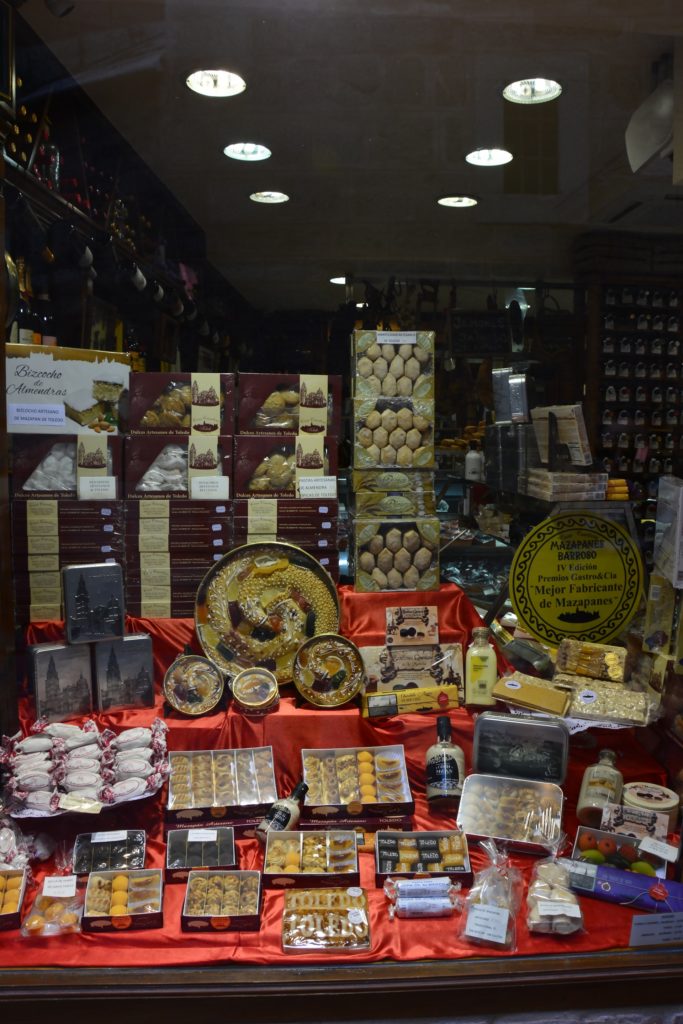
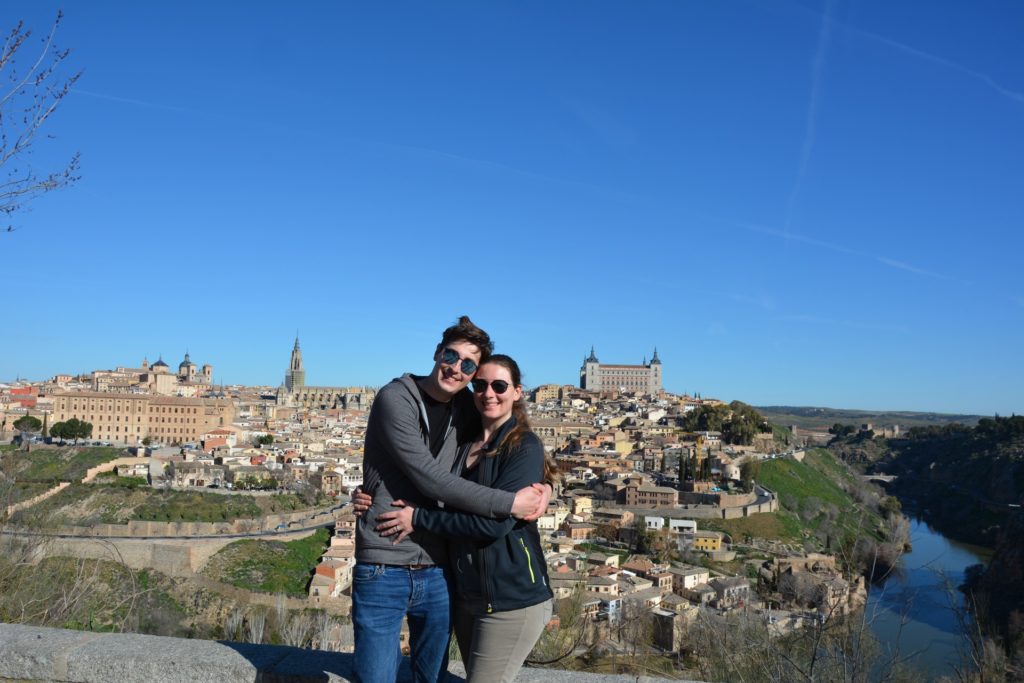
A little less than an hour south lies the city of Consuegra. The city itself is not worth a stop, wouldn’t it be for the amazing windmills close to a Castillo. Situated atop of a ridge, a dozen lovely old windmills look at the seemingly never-ending farmlands below – the perfect cover picture for the home of Don Quijote, who’s path led through the region.
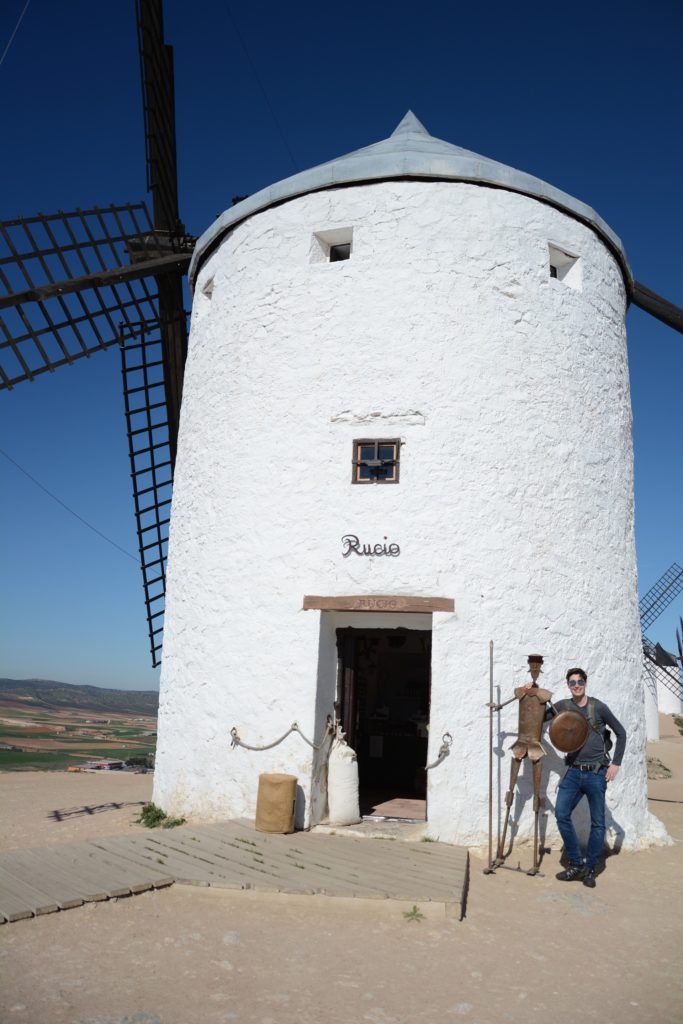
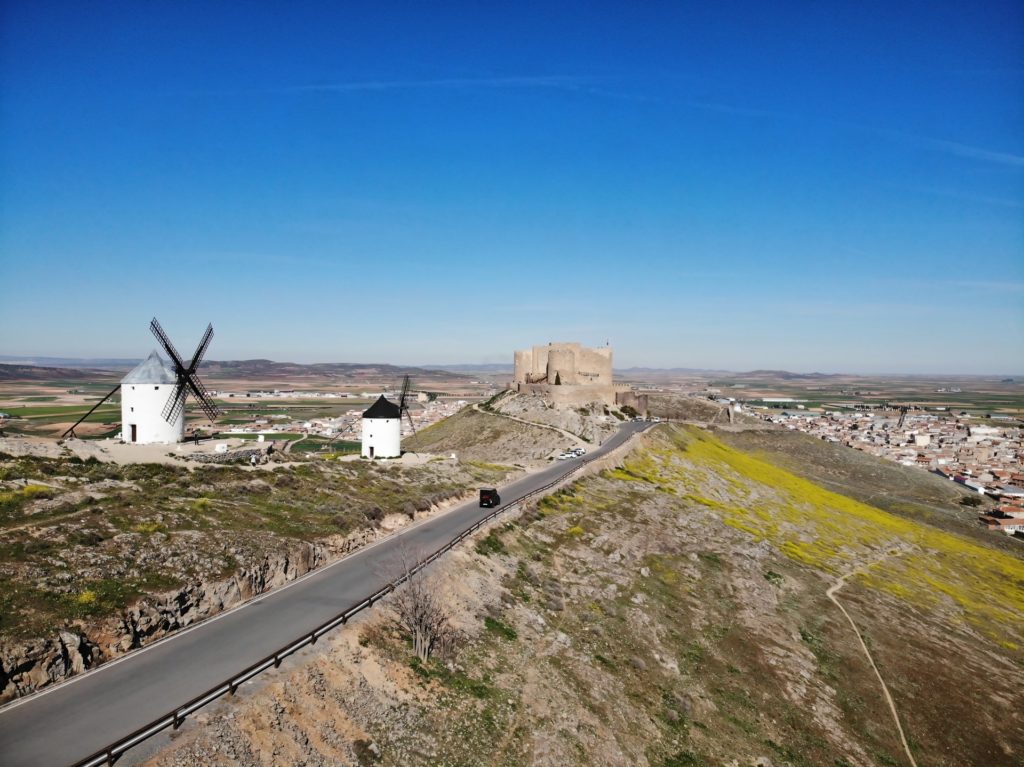
The land of the region is more or less completely covered in farmland consisting of huge vineyards, wheatfields and grassland with oddly few animals. This made the Tablas de Daimiel National Park a lovely change of scenery. For the past 50 years, newer ways of irrigation led to a continuous lowering of the groundwater level, drying up former wetlands. The national park conserves this ecosystem and is a great ground for bird watching. We tried our luck on a splendid circular path but only saw few birds except in the fenced rehabilitation zone. The watching posts were a heaven of tranquillity and we thoroughly enjoyed it after all the city touring. A bird enthusiast informed us that we were looking at critically endangered birds such as the bearded tit and some ducks but honestly, we would have enjoyed it as much with “normal” birds. On our way through the park, we also got lucky and detected some turtles, one of them still tiny small.
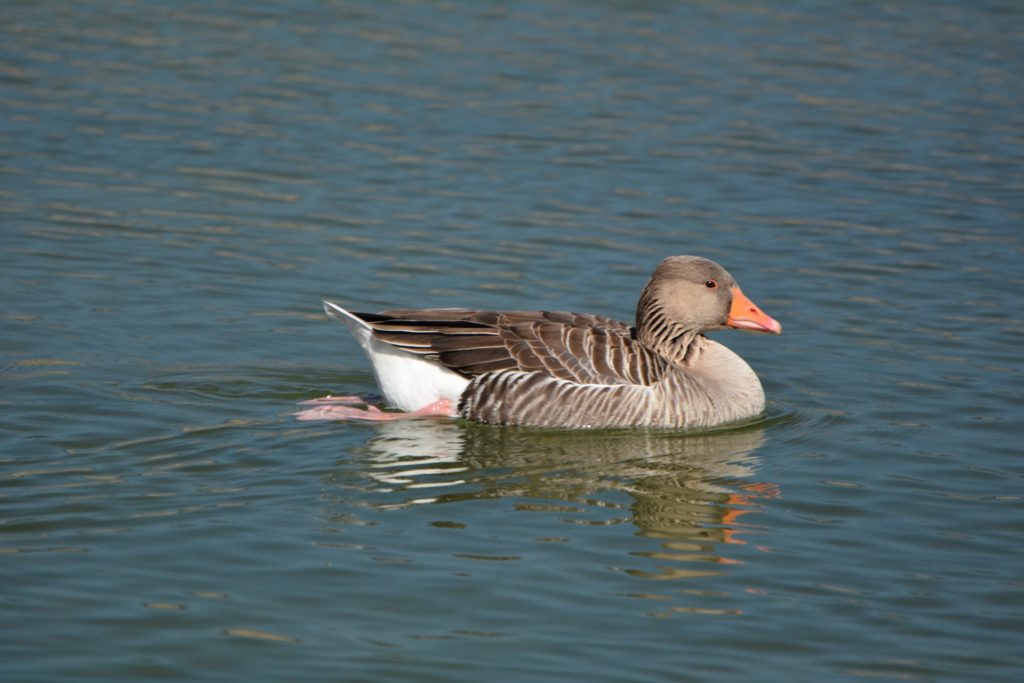
The last destination for the day was Almagro, where we headed for a campground and some long due showering. In the city, apparently the theatre capital of Spain, a night of partying in celebration of Carnival was about to start, but we were too tired to stay and went soon to our beds.
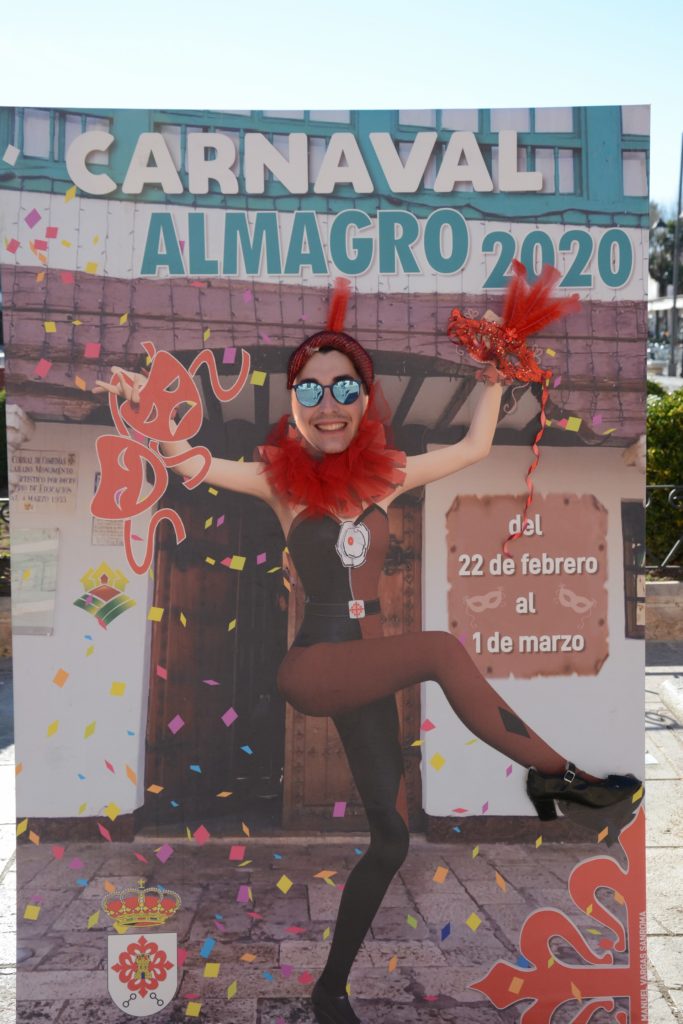
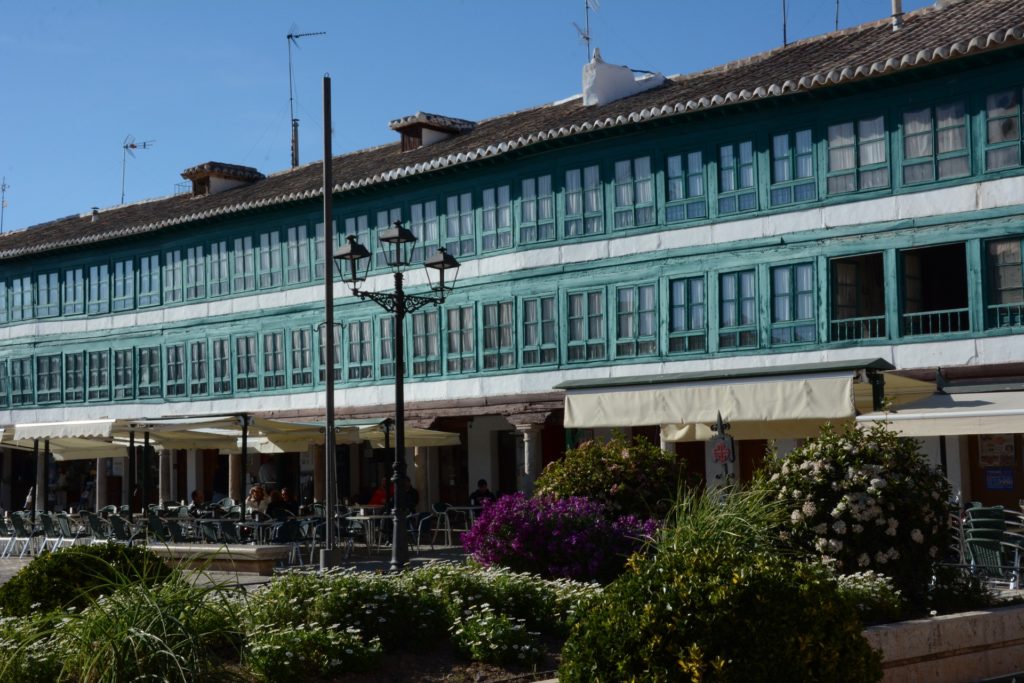
OLIVE TREES, OLIVE TREES AND SOME MORE OLIVE TREES
After a good night’s sleep, we planned to get a headstart for the day. With sunrise in the background, we got ready to leave only to find the camping gates closed and no-one around. So we made use of the wifi near the reception and hoped somebody turns up sooner than “hasta manana”. We knew it will take us 2 hours to the Ubeda/Baeza region where there was a tour in an olive factory at 11 according to our guide book. Just when we started to get nervous about missing it, one of the staff arrived in her car and released us from our entrapment. Unlike the other days, we skipped a coffee stop and drove through, passing partridges on the way. However, once at the olive oil factory one of the factory workers informed us that today the tour will only take place at 5 pm. No tour for us then…
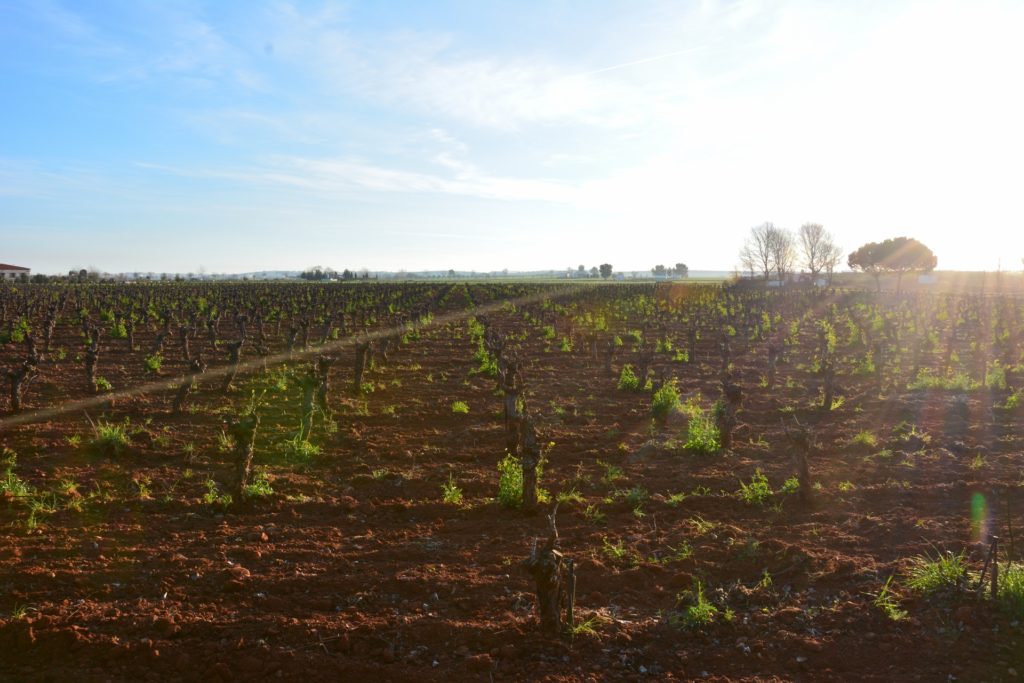
Instead, we spent the day walking through the UNESCO medieval twin cities of Ubeda and Baeza, which made up for the mornings’ disappointments. Both cities were very lovely and we closed our knowledge gap about olive oil in a museum in Ubeda. The towns were some of the first to fall back into Christian hands during the Reconquista and unlike the rest of Andalusia few Muslim buildings remain but a treasure of old renaissance churches, Palacios and plazas. The region is heavily reliant on its olive oil production as it is the source of one-sixth of the global production. Unsurprisingly the whole area is covered in Olive fields and there is little land not occupied by them.
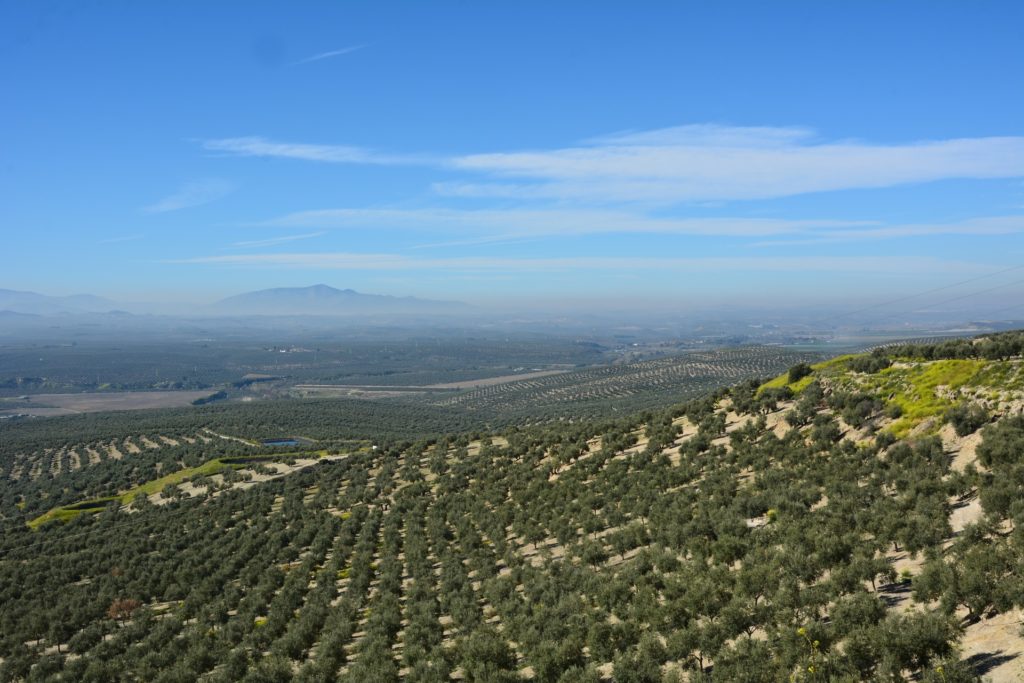
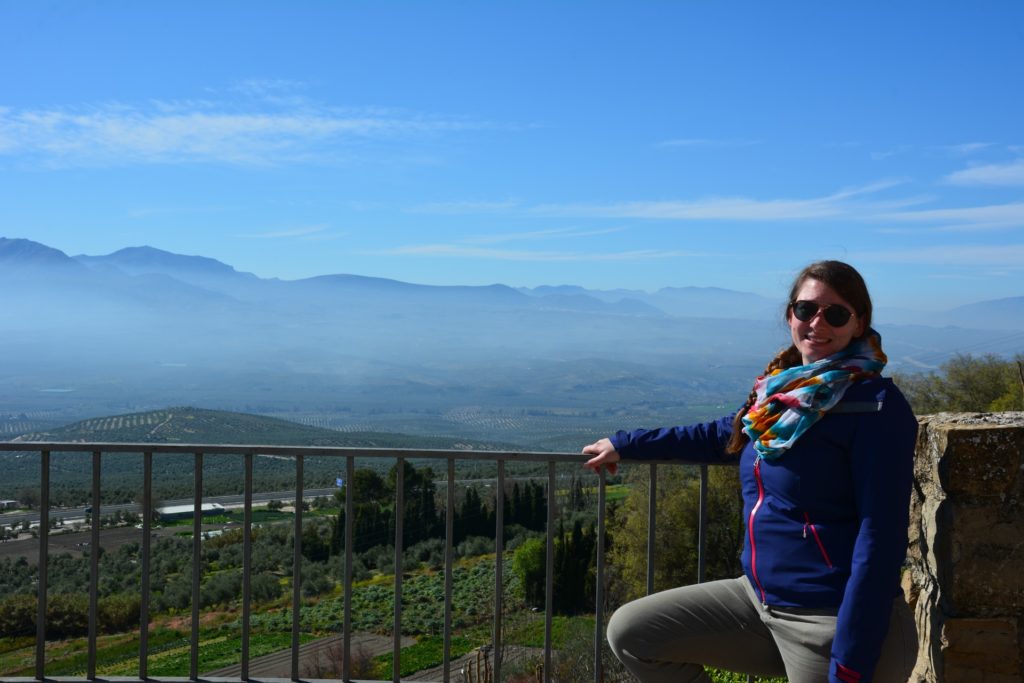
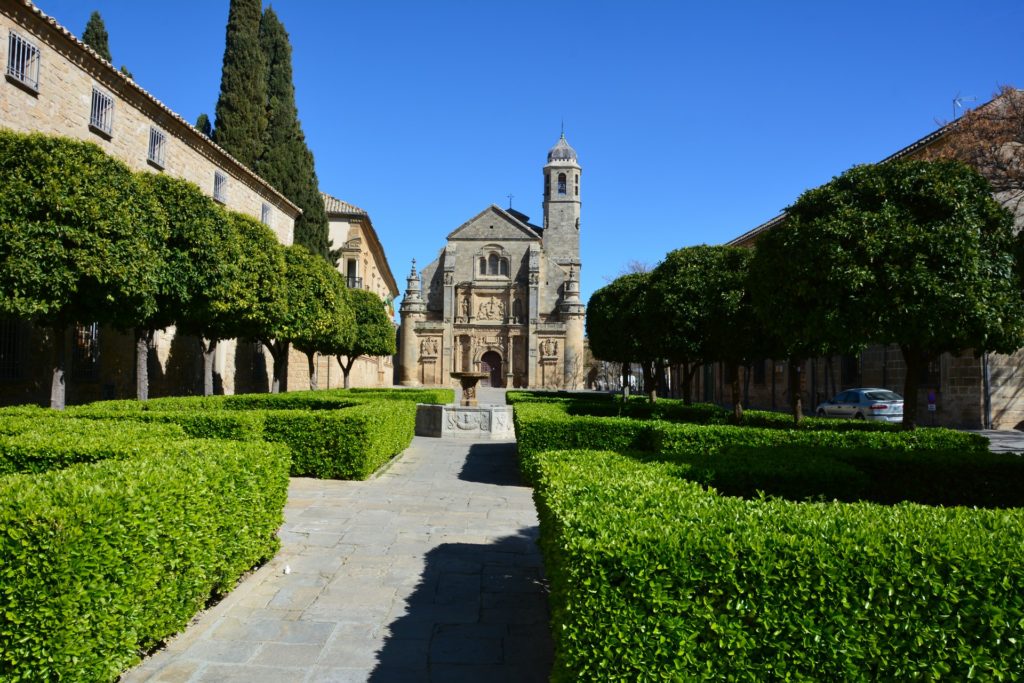
THE AWESOME GRANADA TRIO: BEER, TAPAS AND THE ALHAMBRA
We started the day around freezing point, but the later it got, the warmer the weather became and when we arrived in Granada it was a pleasant 19 degrees. We followed our tested approach of parking the Pantherli on the outskirts and took the tram to the city center. As a last hike of the day, we climbed up to the San Nicolas area, just in time to gaze at the Alhambra being lit by the fading sunset. The mirador was crowded with people doing the same and in the background, a duo was playing Spanish folk songs. With the sun gone it was time to replenish our batteries and we made use of the tapas scene of Granada. With every beer, you get one tapa, which is a great excuse to skip normal dinner and instead just drink a couple of beers. What surprised us the most besides the price (2 euros for a beer and tapa) was the good quality and quantity of the food. No idea how they afford to do it, but I could definitely get used to it.
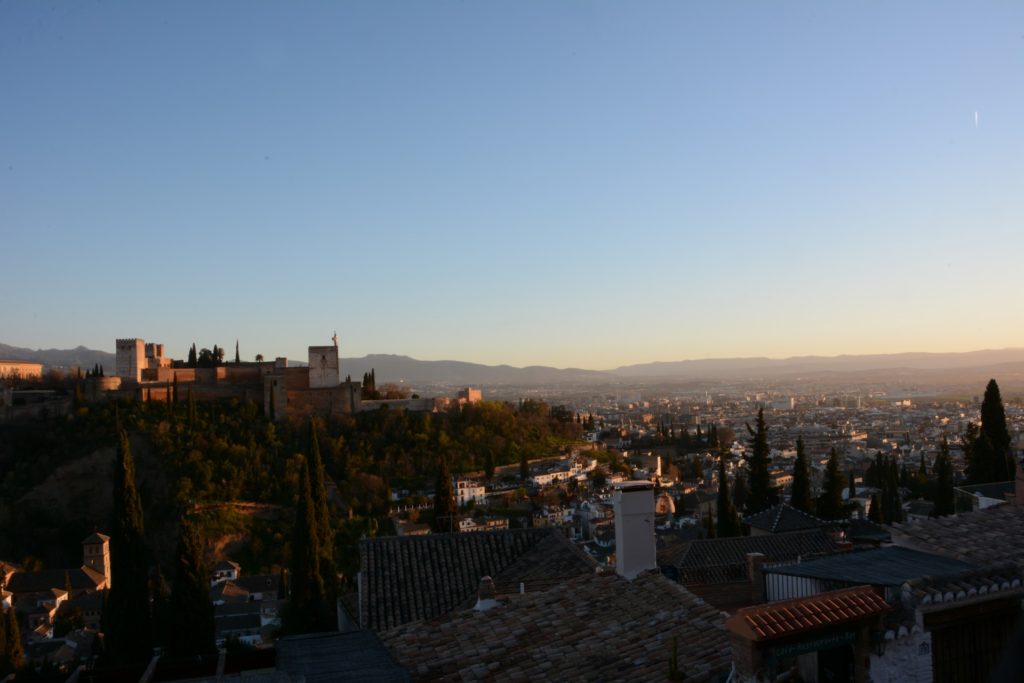
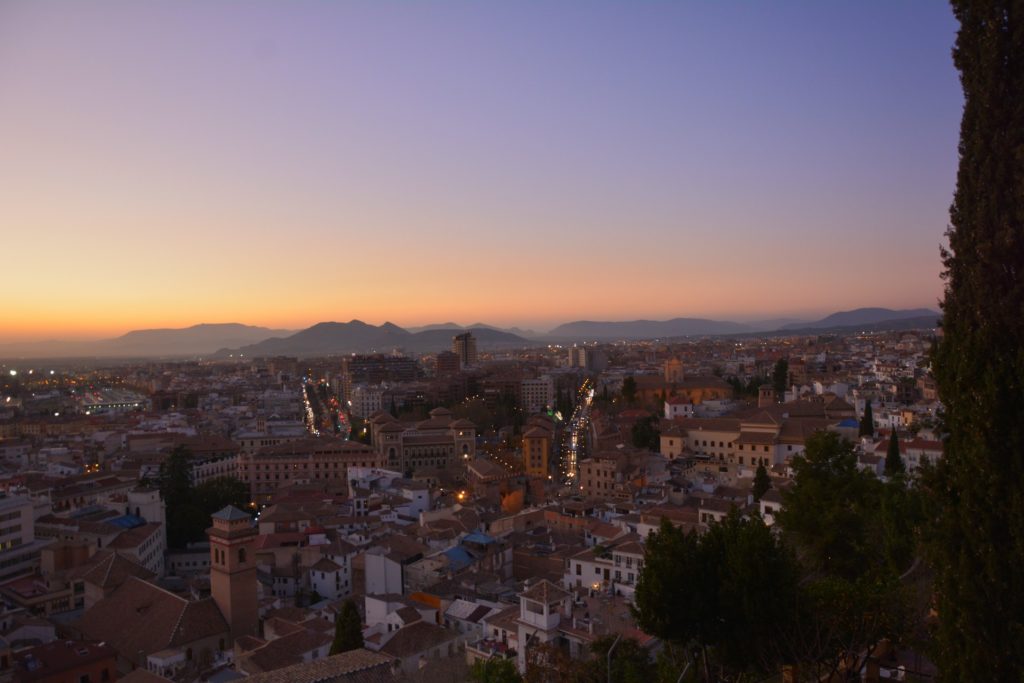
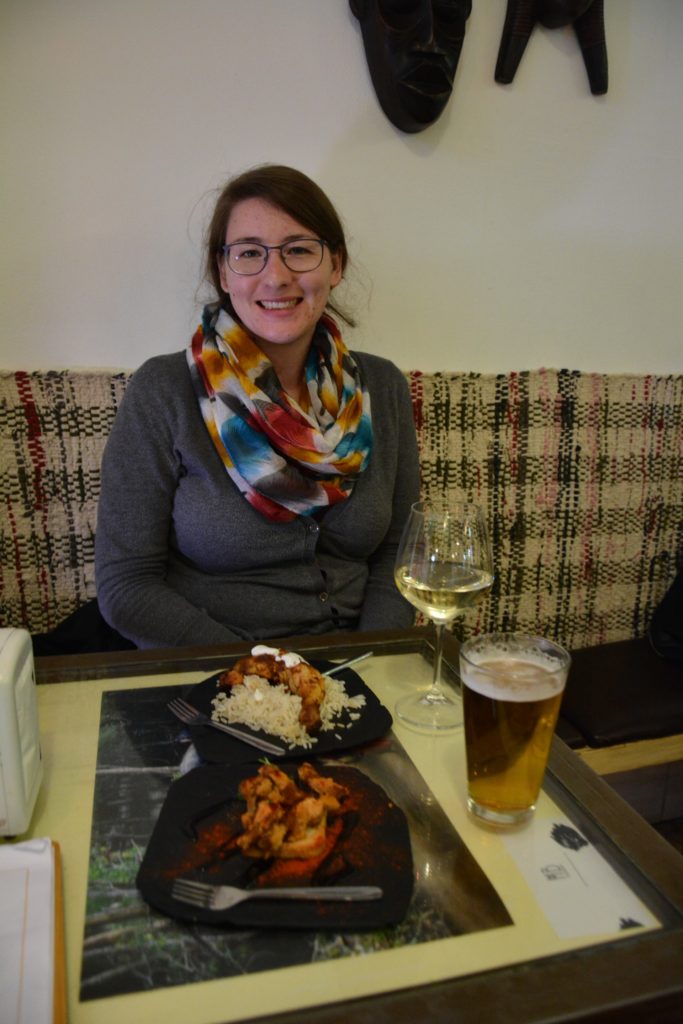
After getting some rest, we got up early again and went to the Alhambra. Two days earlier we looked for tickets and it showed us the next availability to be the end of April. Something we heard before. For no other reason than being stuck in the camping in Almagro, I checked again, initially looking for alternative ways to get in. And lo and behold, some minor amount of tickets were suddenly available. Sometimes being stuck has its upside.
We got tickets to access the Palacio de Naziers at 09:30 but we already arrived at the gates at 08:30. Not a problem, as we took the time to already visit the Generalife, which was nearly empty this early in the morning. The whole Alhambra is incredibly beautiful, but the Nasrid palace took it to another level. The intricate works compared with the scale of it is an impressive feat. Built in the declining moor empire of Al-Andalus in the 15th century and testimony to the centuries of economic and scientific advancement preceding it, we were taken aback by how little we knew about that time and the impact of the Islamic culture on Europe back then.
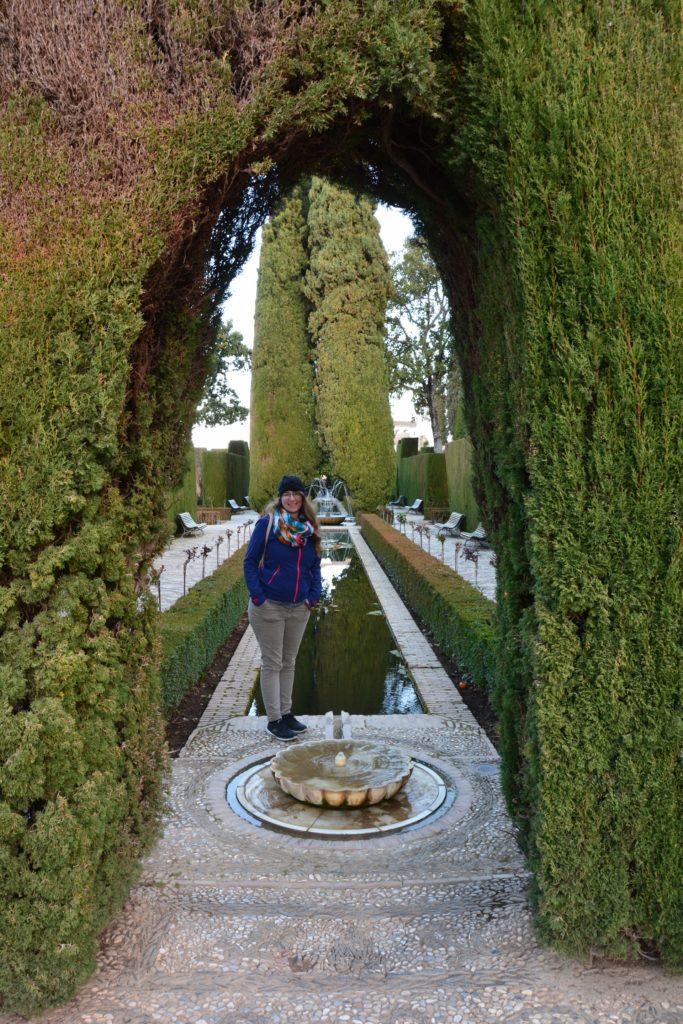
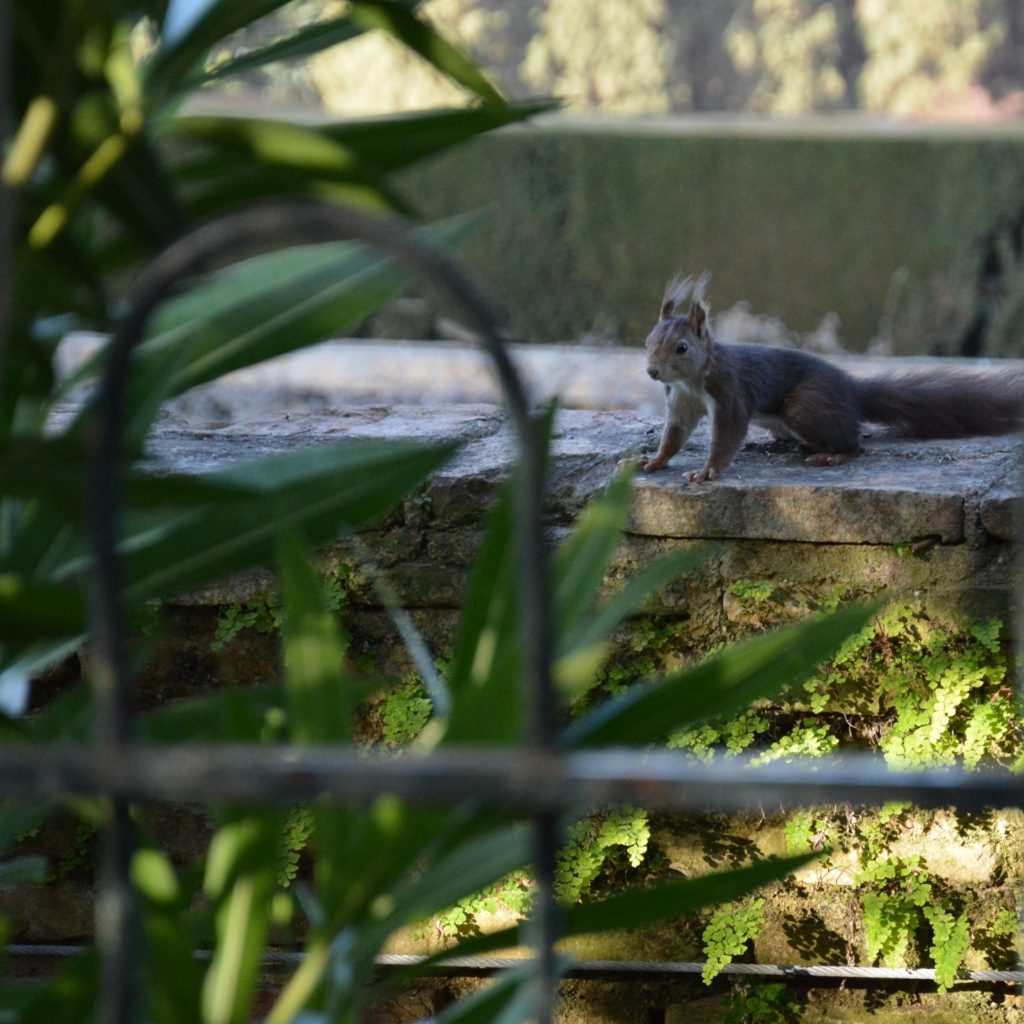
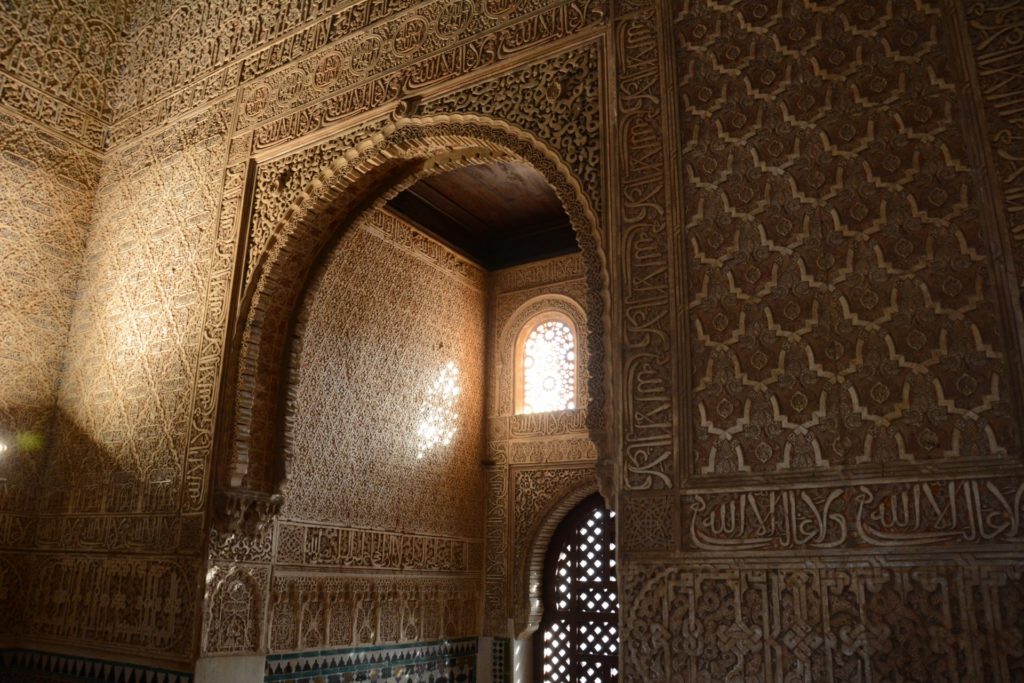
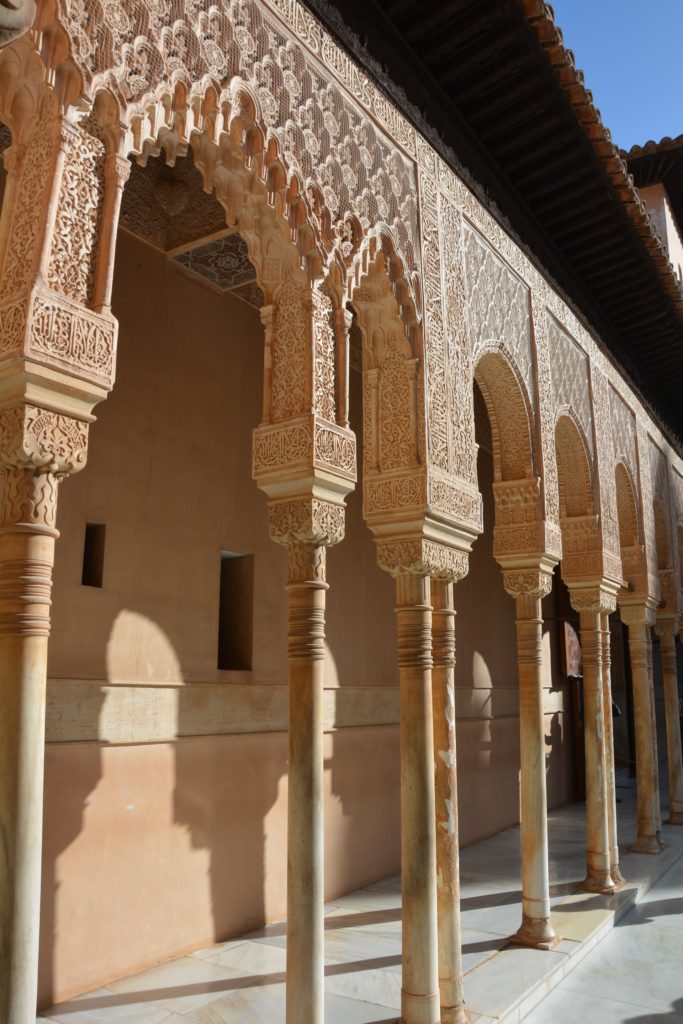
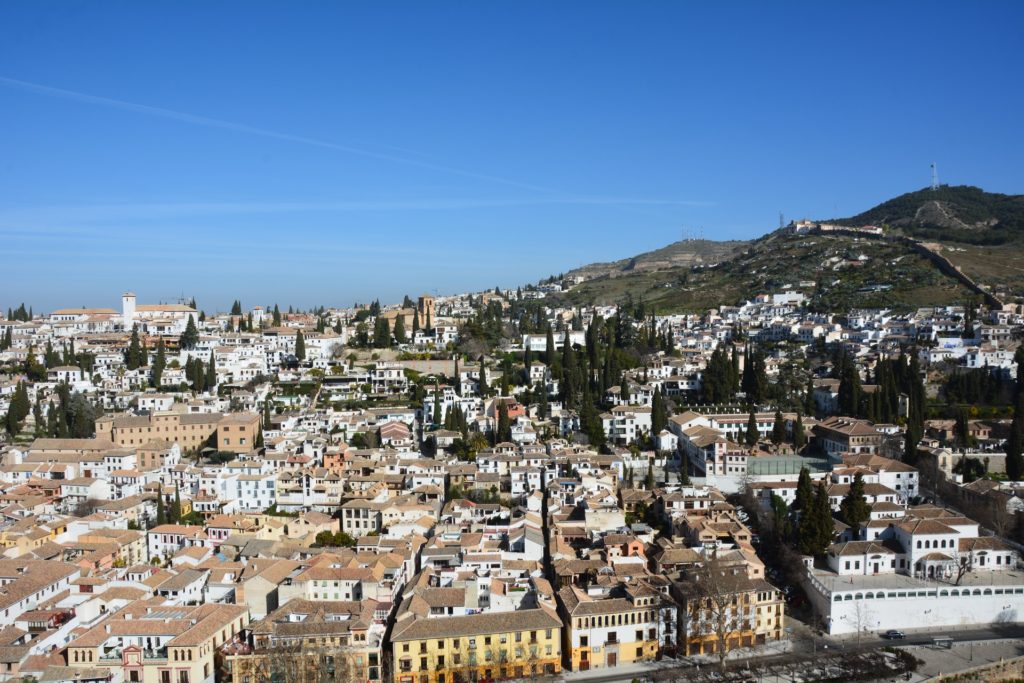
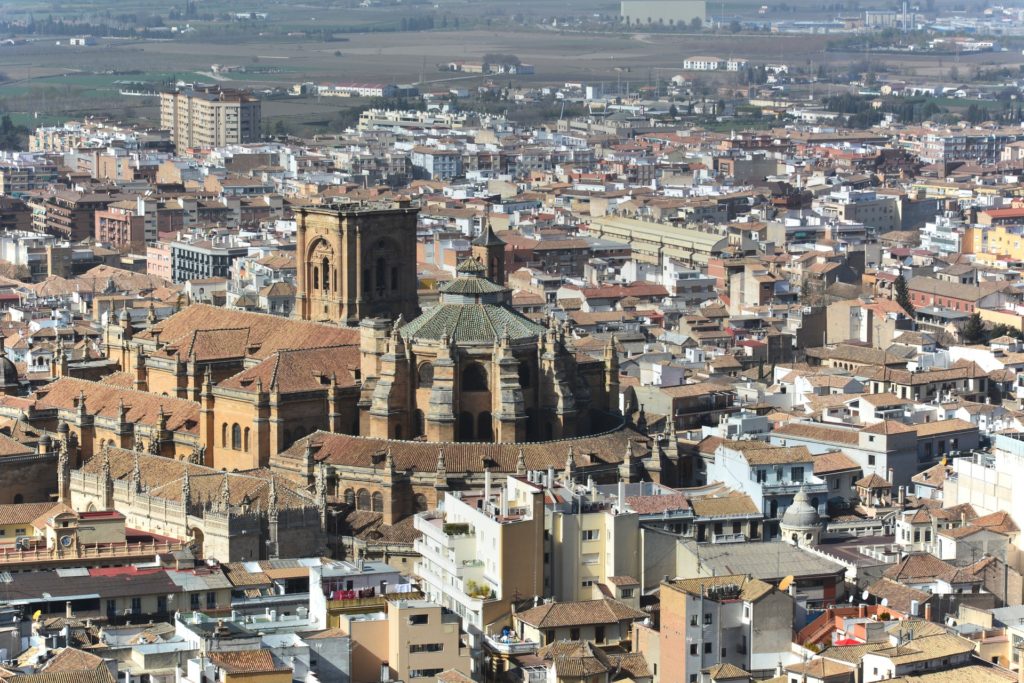
In the early afternoon, we left Granada and headed back north in the direction of Cordoba. On our way, we made a short lunch break in Alcala Real, which is below the Fortaleza de la Mota. Late afternoon we got to Zuheros. A town with narrow streets and white houses, typical for the region. Zuheros is nested on the steep mountains beside a narrow canyon and boasts a fort on the tip of a cliff as its most dominant feature. We were too exhausted to take a hike in the nearby national park but enjoyed the views from the street and the occasional traffic jam caused by a crossing goat herd.
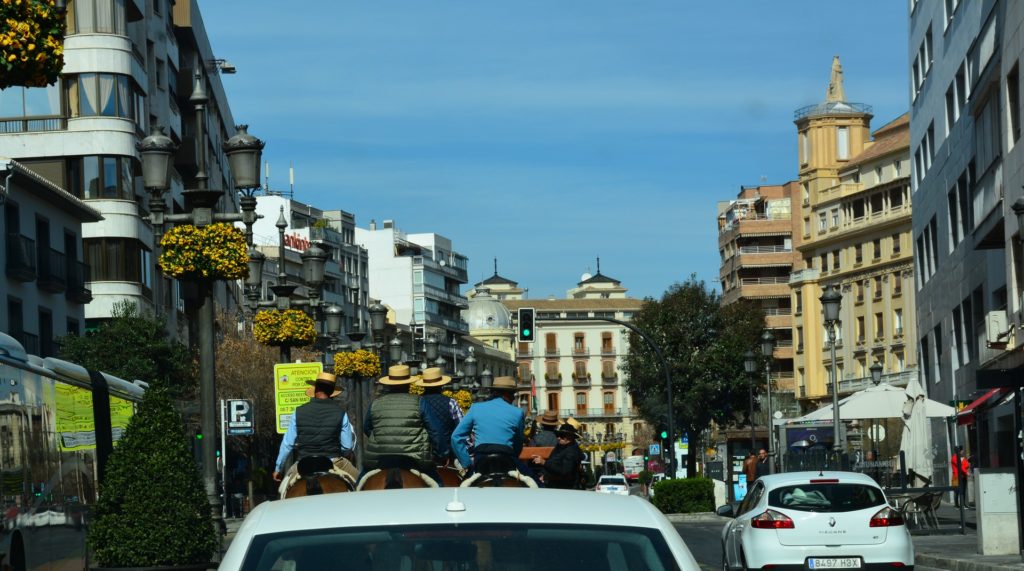
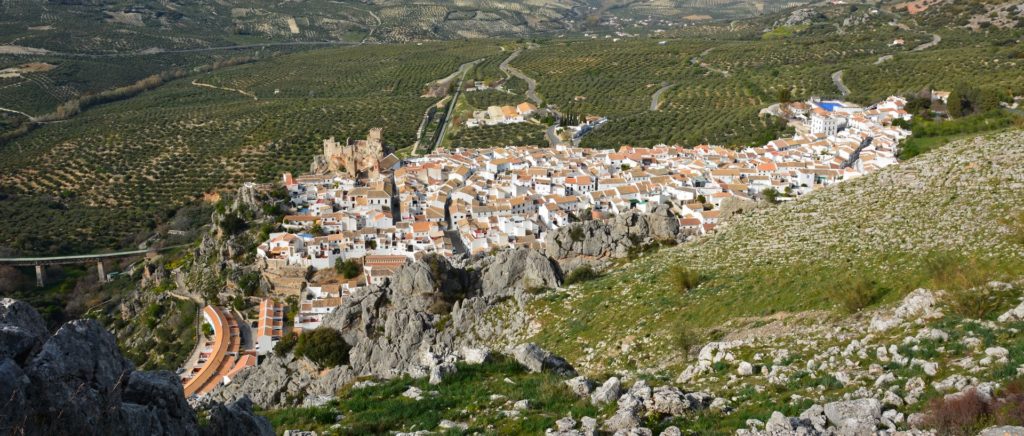
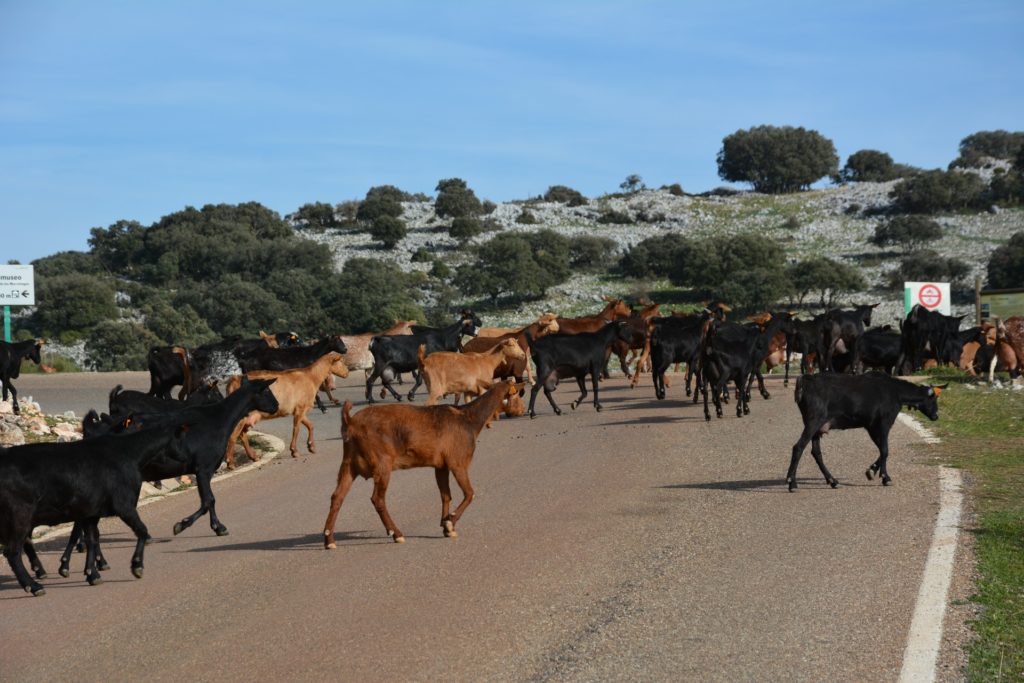
A good hour later we finally arrived at the campsite we googled earlier and got to do some laundry again. As long as campsites are still available and providing good washing possibilities we currently rather wash once more than absolutely needed.
CORDOBA – MELTING POT OF RELIGIONS
Saturday morning we first spent replenishing our food reserves and bought some spare parts for the camper truck. We parked on the other side of the Guadalquivir and crossed the Roman bridge to the Mesquita. Cordoba is known for having a rich history and features many Moorish, Christian and Jewish buildings. The centrepiece is the Mezquita, a former mosque that later got transformed into a cathedral. The combination is stunning and we used it as a photography playground, after having figured out that we messed up some settings in the previous days.
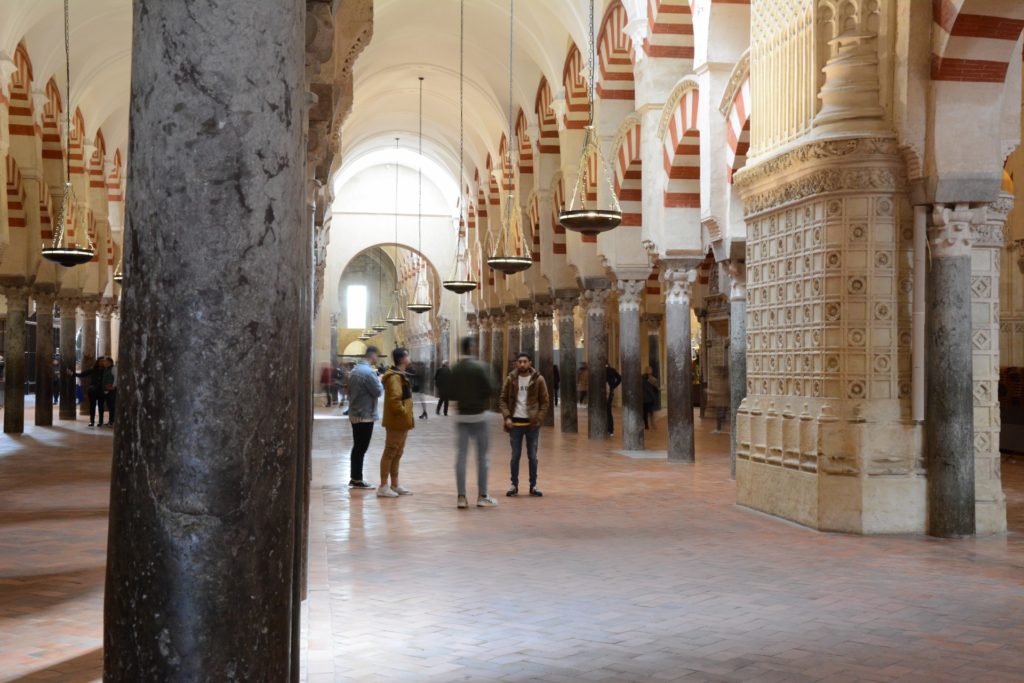
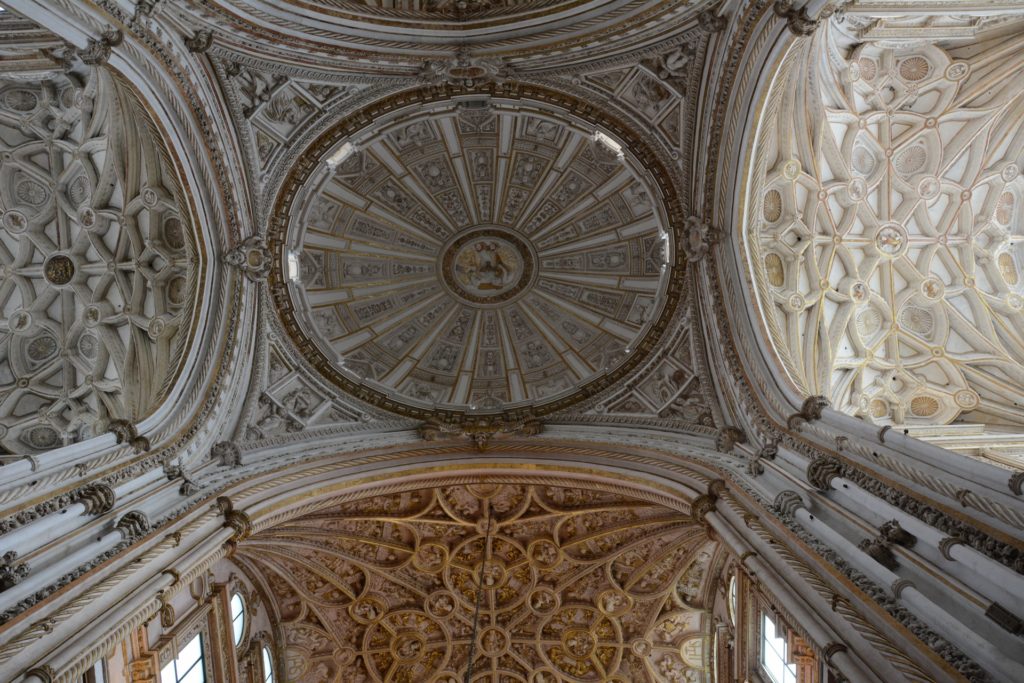
For lunch, we went to the Mercado Victoria. Similar to the market in Madrid regarding the food and general concept, but a lot cheaper. We loved the experience as you can taste a lot of different things and I can dive into seafood without bothering Carole.
In the afternoon we drove in the direction of Sevilla. In Ecija, we wanted to get some coffee but got lost in the super narrow one-way streets and were happy when we left without a scratch or dent, despite still craving a coffee.
We got our coffee fix a little bit later in Carmona, where another carnival celebration was on its way. It seems like we sat there a little bit too long, as once we got to the nearby Roman Nekropolis they wouldn’t allow us in anymore. Well, sometimes you need to make a sacrifice for a fresh cup of coffee.
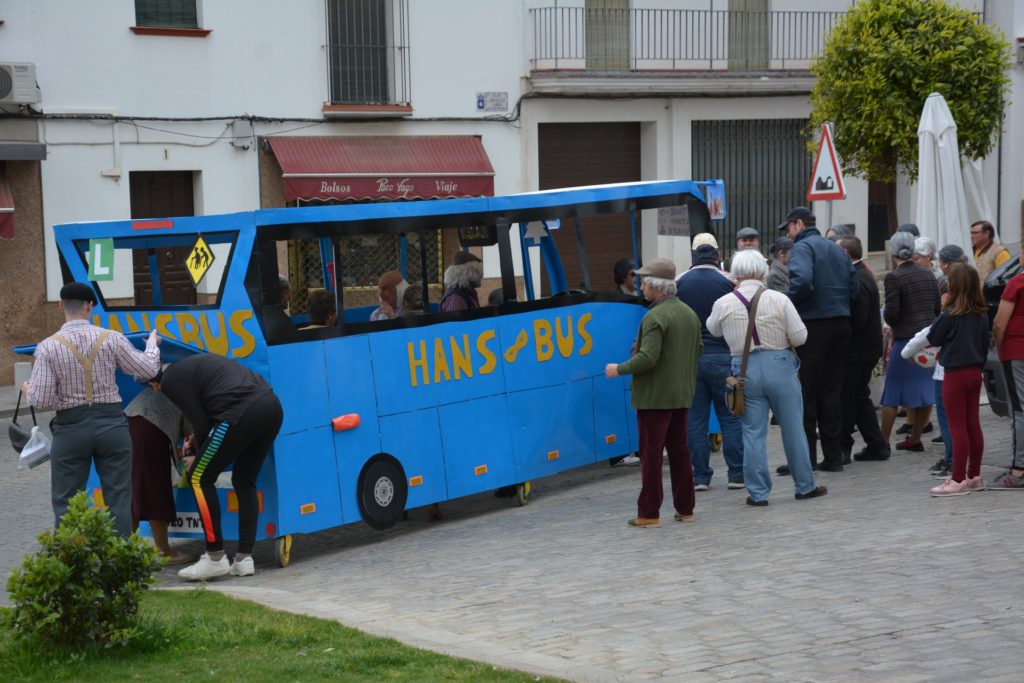
Late in the afternoon, we got to an old mill along a small river a little bit off the normal roads in Alcala de Guadaira, just outside Sevilla. The park seemed to be a popular spot for Barbeques based on the full trashcans but once we got there we were the only ones beside another camper and some cyclists with a tent.
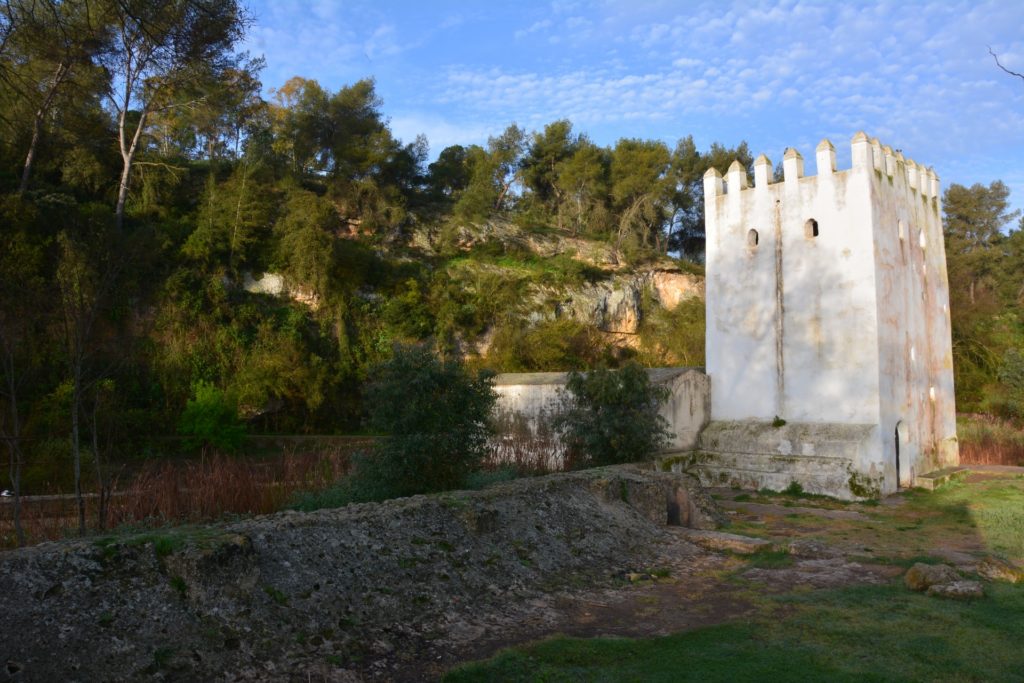
I finally got to take out my fishing gear in the river but to no avail. Besides the usual sticks and leaves, nothing would bite which left Carole relieved as it was drizzling and she did not feel like cleaning and cooking a fish that night anyway. So in a way, we were both happy.
SUNDAY IN SEVILLA
As last stop for this week, we had Sevilla on our sightseeing menu. But before heading to the city center and once again getting lost in narrow city streets we went to Italica just a little bit north. Italica was a roman city and the earliest documented city in Hispania. The outdoor museum was great and we enjoyed a morning walk around the ruins and the incredible mosaics. Any modern puzzle has to stand back behind these monstrosities. The amphitheatre, one of the main sites, once boasted a place for 20’000 people. Imagining the organization and building required 2000 years ago to build something bigger than the current stadium in St. Gallen is insane. This amphitheatre, by the way, was also used as a backdrop for some scenes in Game of Thrones, like a lot of other places throughout Andalusia.
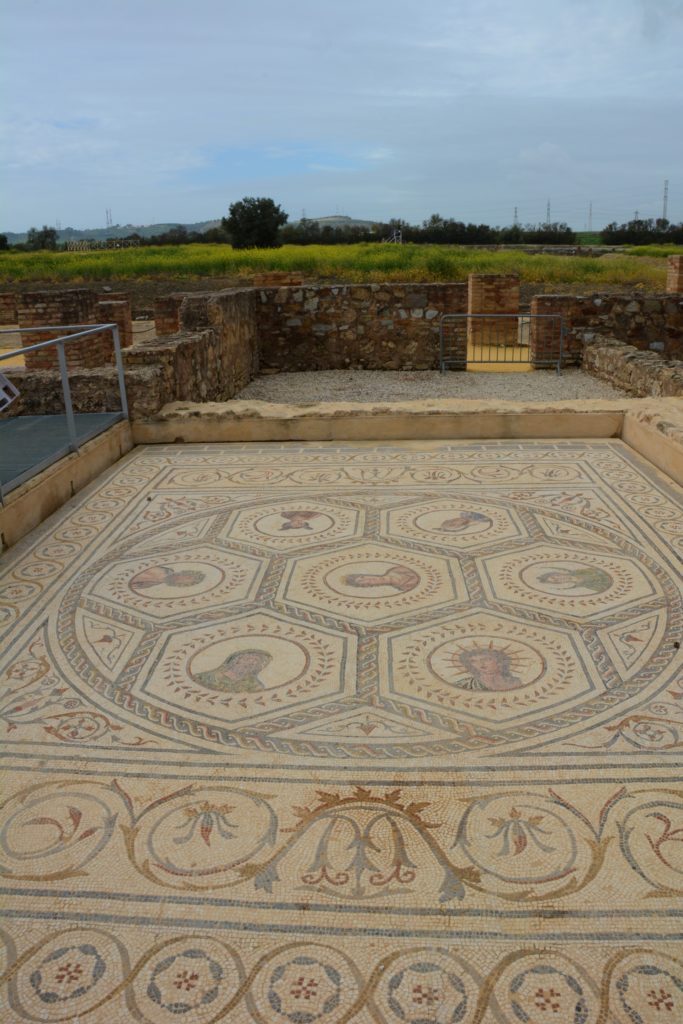
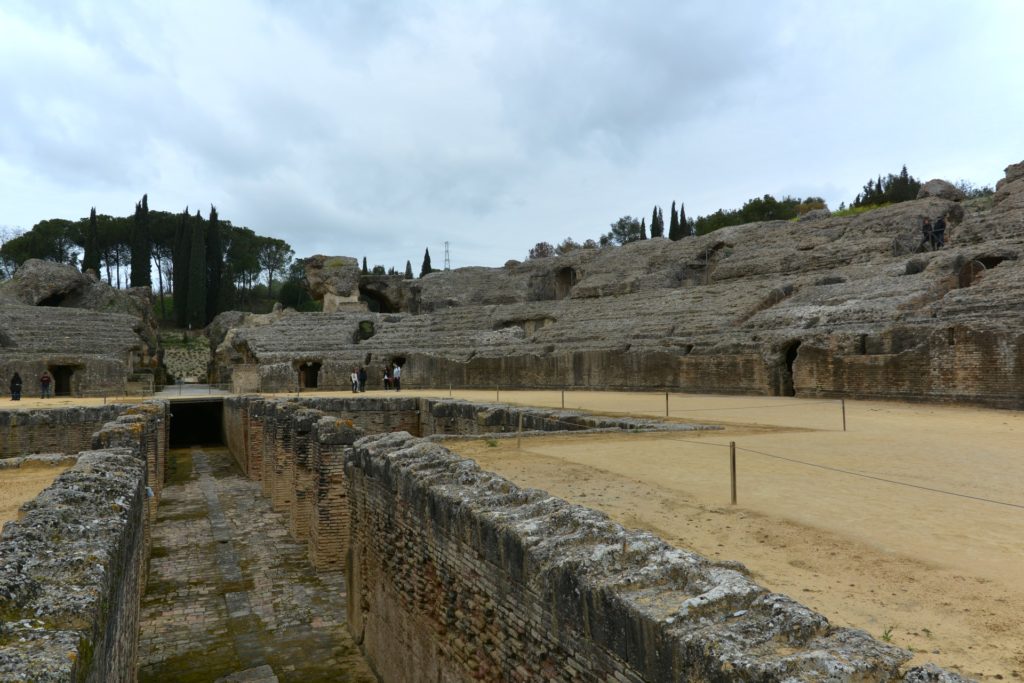
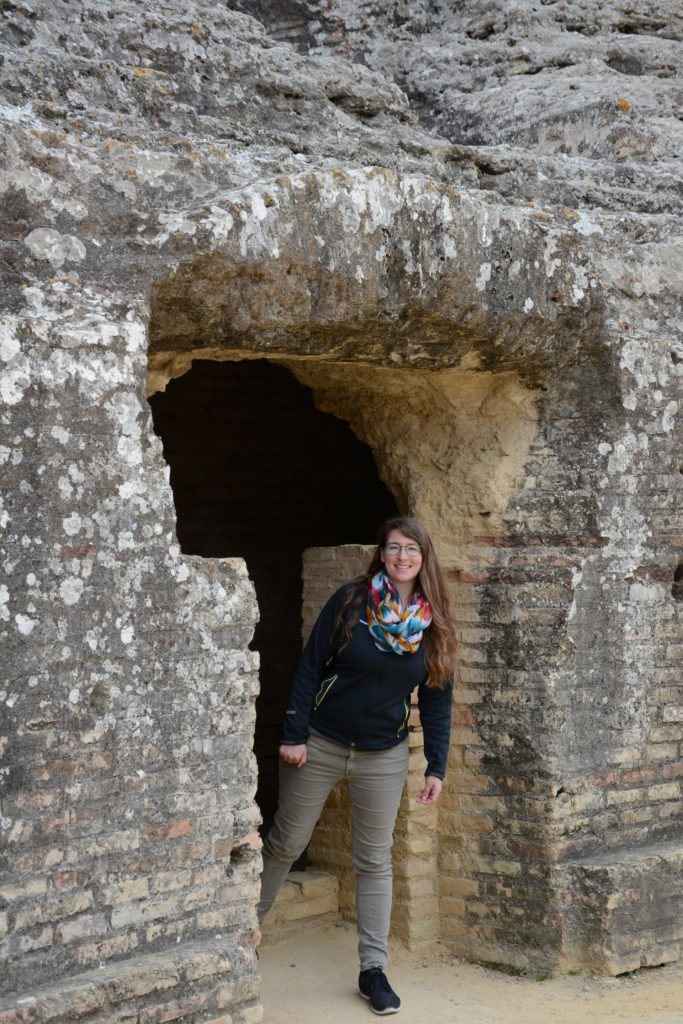
Around noon we finally headed into the city centre and strolled through the historic core of the city of Sevilla (after the aforementioned parking troubles). For lunch, we went to an Andalusian tapas restaurant where we had some interesting combinations like chicken wings on kimchi, tuna tartar and cola del toro (bulls tail). In the afternoon we had tickets to visit the huge cathedral. In a lot of the previous stops, we only walked around the churches as at some point you get an overload. However this time it was well worth going in and studying the masterpieces from past times.
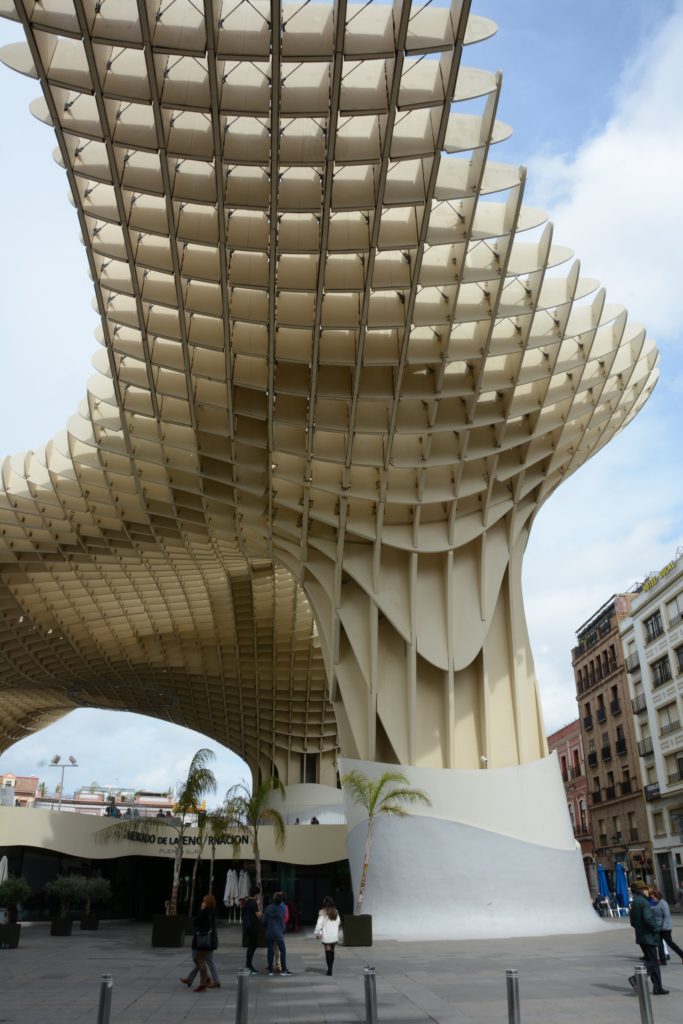
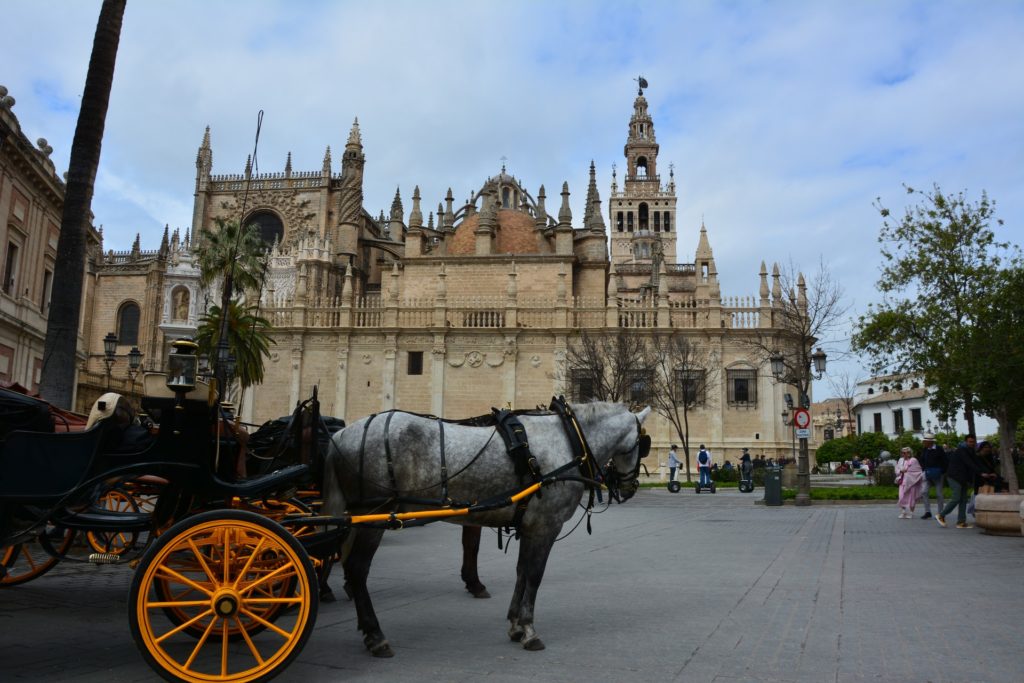
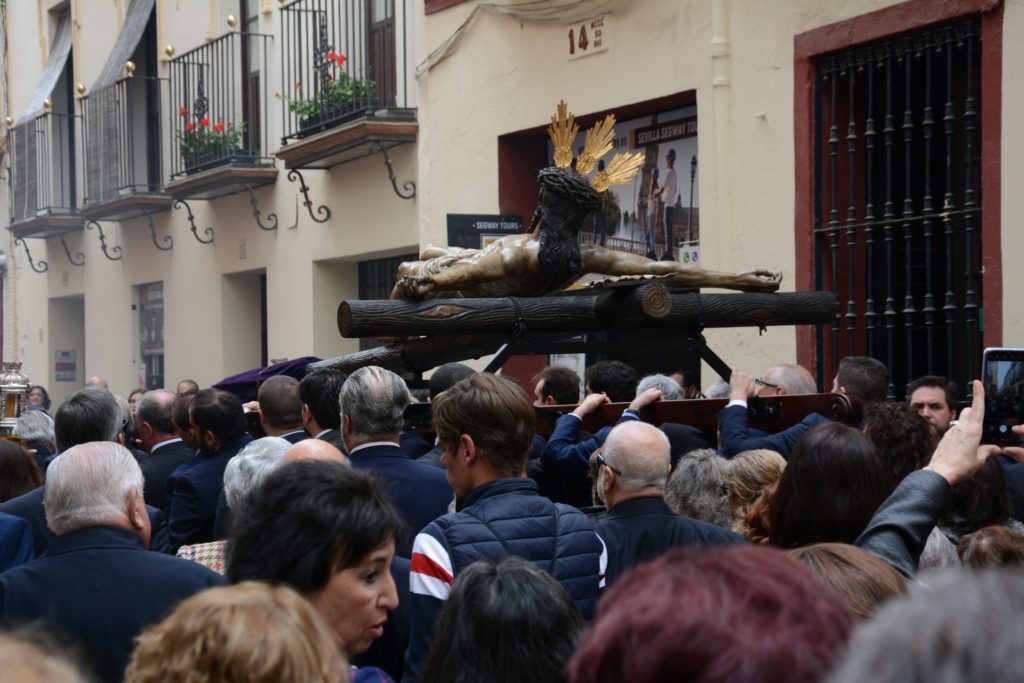
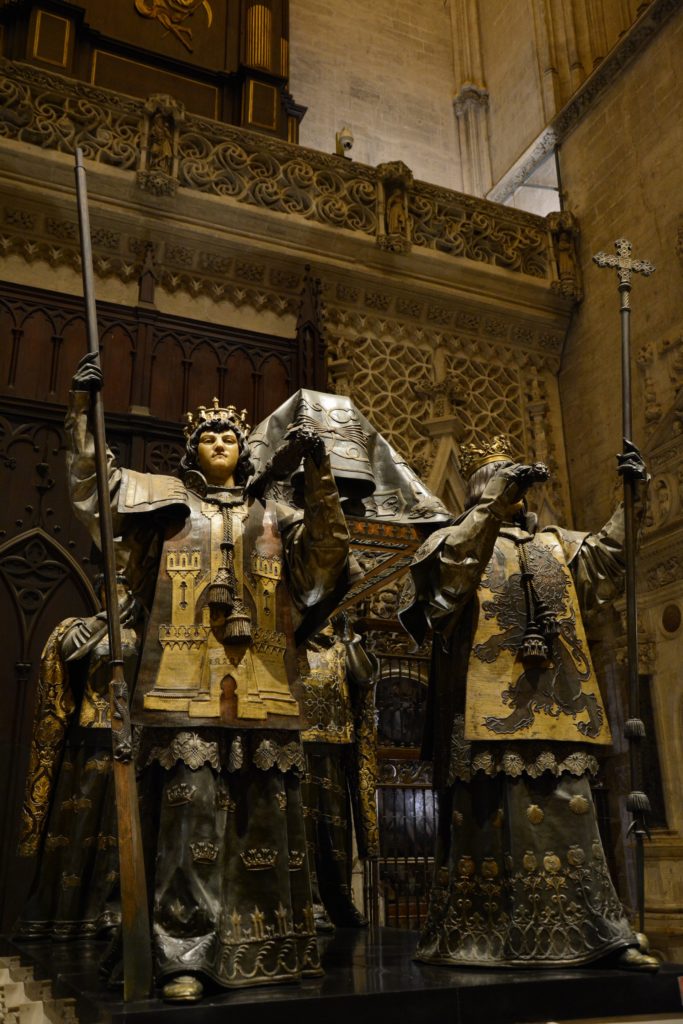
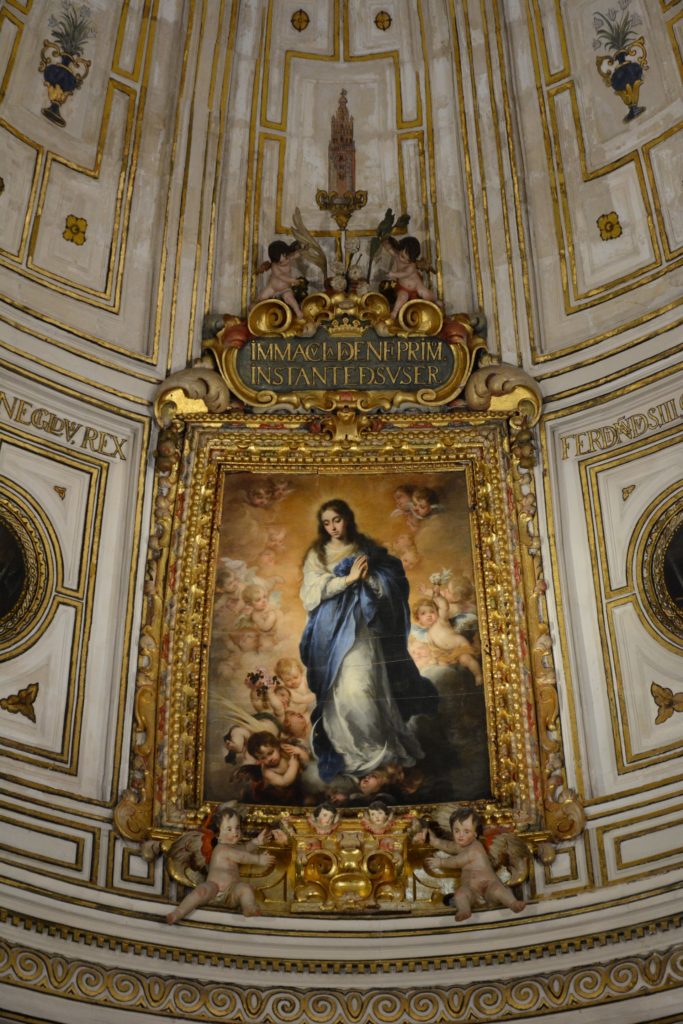
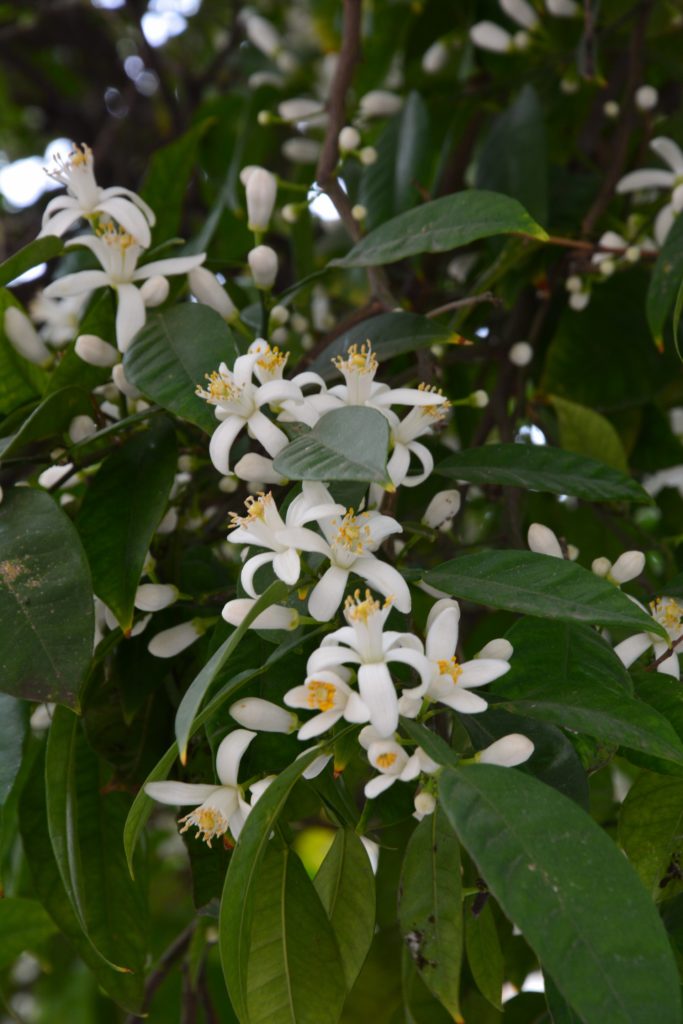
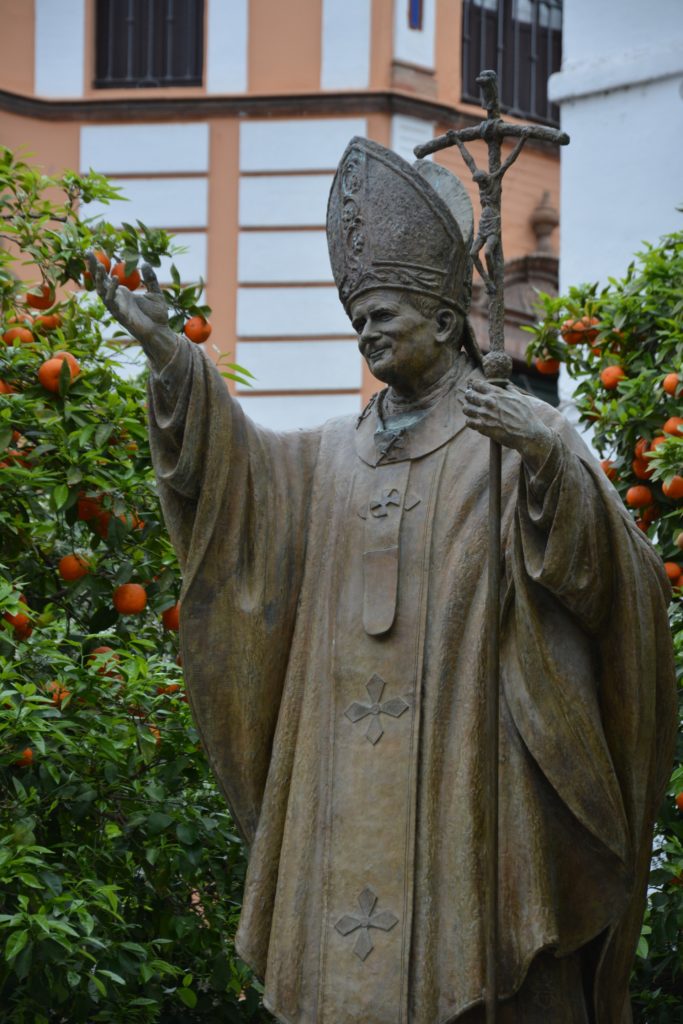
And this concluded another week on the road. It feels like we’re getting more and more into the groove. Getting the bed ready and other daily routines start to establish. More or less every second day we slept in an official campground to get access to its amenities. Something we expect to be different once we cross the Strait of Gibraltar where truly new ground awaits. As of now, we’re torn between hurrying up to explore Marocco and taking it slow and enjoying the relaxed and easy way of Andalusia. A nice tension between two cool things.. We’ll see where it takes us.
FACTS AND FIGURES
- Kilometers driven: 1452km
- Olive trees seen: Millions
